Mechanistically, the way population changes are modeled is:
Future_Population = Initial_Population + Births - Deaths + Immigration + Emigration
The initial population is already known, deaths are easily modeled based on population aging and life expectancy, and migration rates are extremely unpredictable. So, when discussing the future population, people largely focus on the birth rates.
The fertility rates have been dropping for a long time. What is more interesting is why they have reemerged as a topic. The main reason is, if projections are taken at face value, several populations will undergo serious contractions in population.
The second is that the rate at which fertility declines appears to have increased in the last decade, when previously there was strong evidence for convergence towards a rate of 1.5 to 2.
Nobody besides the radical right and a few edgy teenagers want to discuss an underlying reason why birth rates have become more interesting, which is that the racial demographics of the future are projected to shift in a way that people find… Unpleasant.
Onto the causes of the decline: I don’t think it’s that much of a mystery. In Europe, most women say the want to have 2-2.5 kids; for China and America the figures are 1.7 and 2.5 respectively. Even if people have as many children as they claim to want, fertility rates will not be particularly high. Then, consider that:
~10% of the population has biological fertility troubles.
Some people would rather optimize for variables besides family formation, so completed fertility should always be a bit below ideal fertility, even if stated preferences are accurate.
People find it increasingly difficult to find sexual partners in America.
Unwanted births are becoming increasingly rare due to contraceptives like abortion, education, condoms, and pills.
Many western societies are experiencing social decay in the form of obesity, decreased trust, racial diversity, and increased inter-gender tensions.
People are frequently exposed to aspirational lifestyles (luxury apartment, fake 500k job) and sexual partners (18 yo Swedish girl, kpop stars) on social media.
Because of this, I predict that fertility rates will stay universally low within developed countries for the rest of the century. My more bold prediction is that, since most of the factors that reduce fertility have already materialized, that the decline in fertility rates within developed countries should be expected to slow significantly by 2030 or so.
II. The UN population projections.
Take Central Africa and South Korea:

Even beyond the optimistic projections, it seems like the UN finds it difficult to actually estimate the fertility of Central Africa, meaning that future projections will be inaccurate regardless of how competent the forecasters are.
The main issue I see here is systematic error: low fertility countries are expected to regress upwards, high fertility is expected to regress downwards. From a statistical perspective, this is not an unreasonable choice, but empirically it doesn’t seem to work well, most countriess seem to be experiencing a constant drop until a TFR of 1-1.5 or so.
The UN also has the diligence of computing forecasts based on various assumptions and models: the most relevant are their ‘low’ and ‘medium’ models. Visually, the most realistic projections for fertility in the West and East Asia appear to be made by the low variant model, while everybody else is best projected by the medium model.

Based on the more realistic low variant model, it appears that both the West and Eastern Asia will undergo significant population contractions by 2100. For Sub-Saharan Africa, I consider the medium model to be the most realistic one, which suggests that the population will peak at about 3 billion in 2100 (though who knows how many people actually live in Africa).
For the whole population, these are the projections.
Another way to visualize the models is to compute the mean change by year. This makes the low variant model look rather awkward.


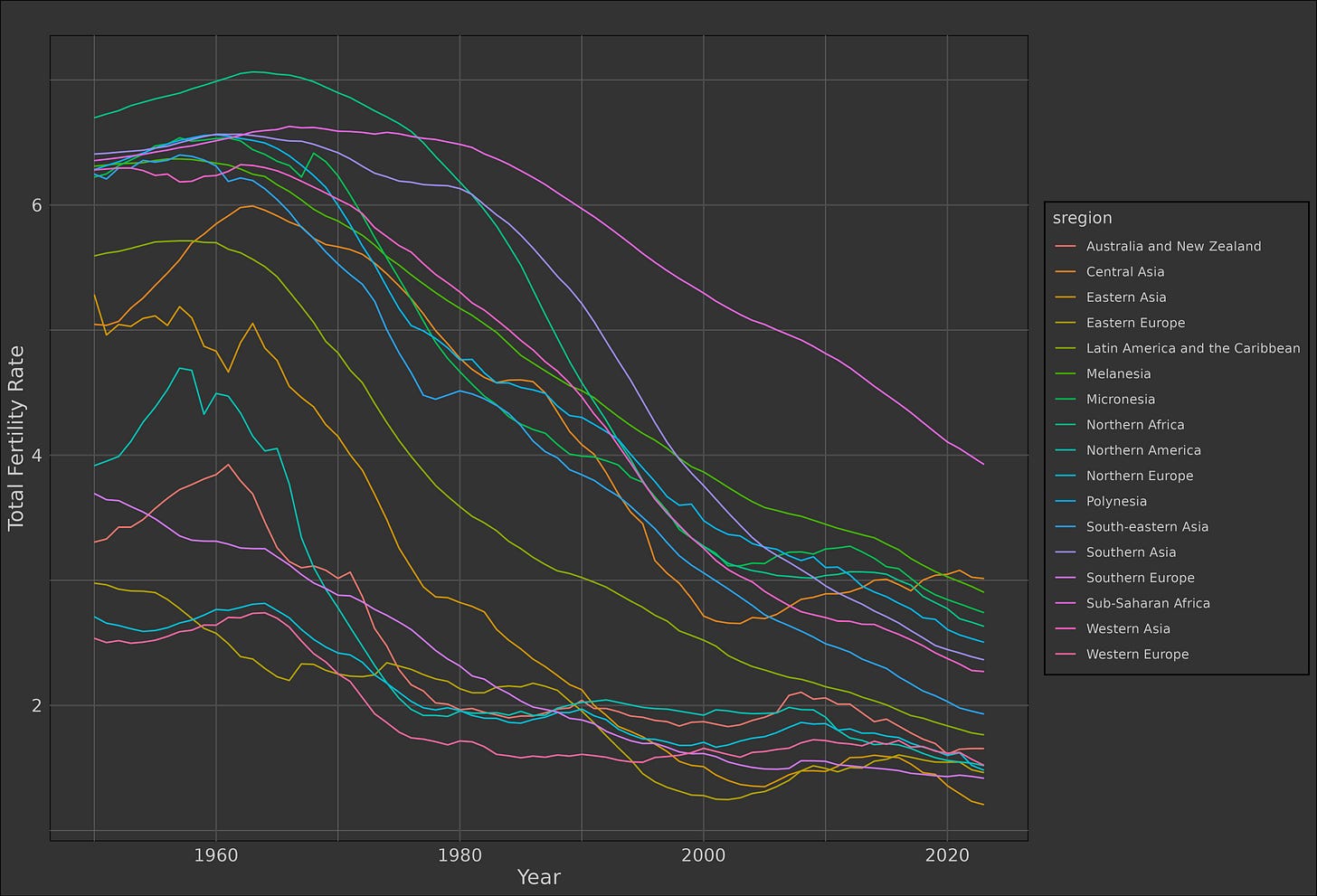
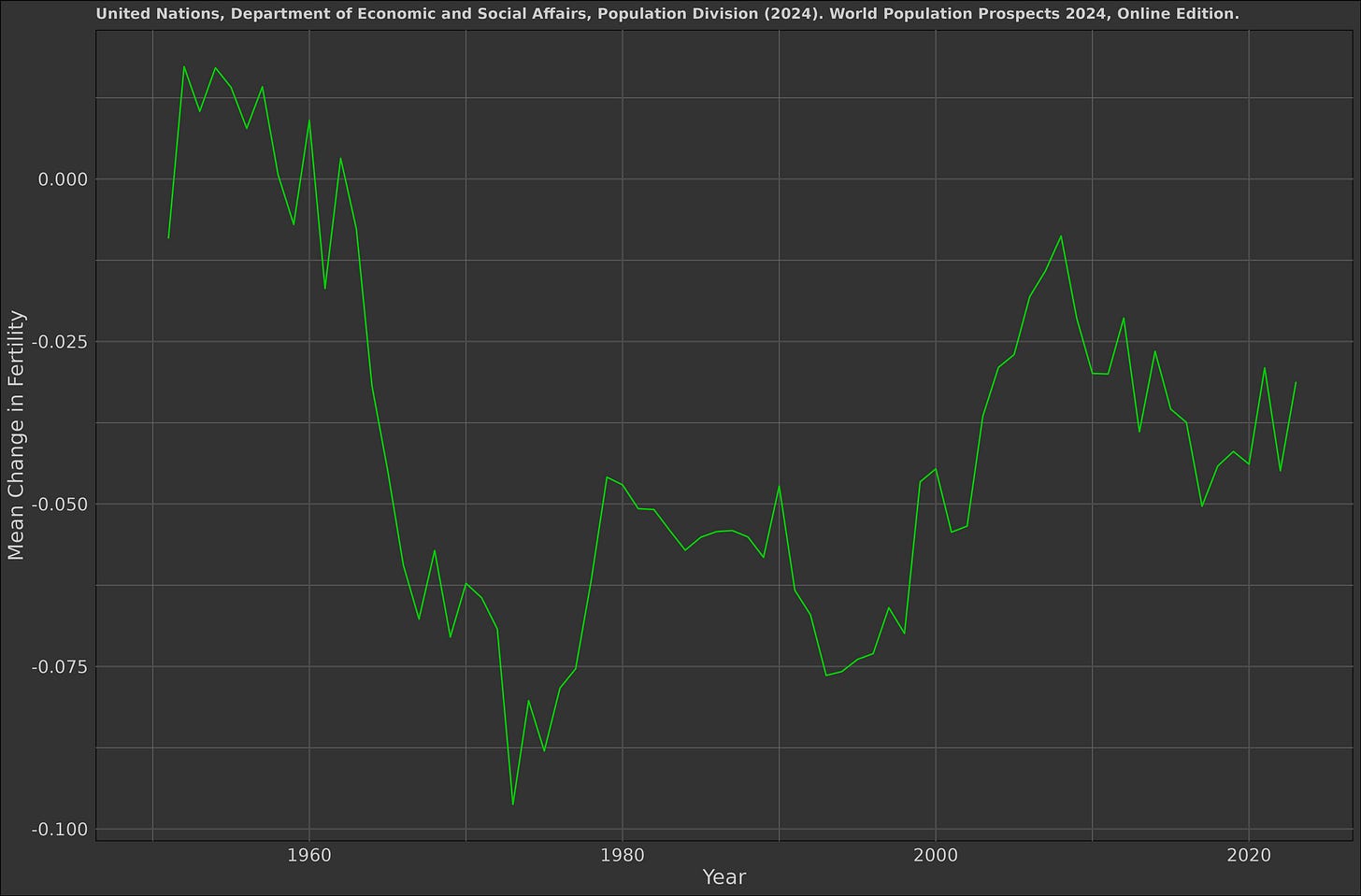
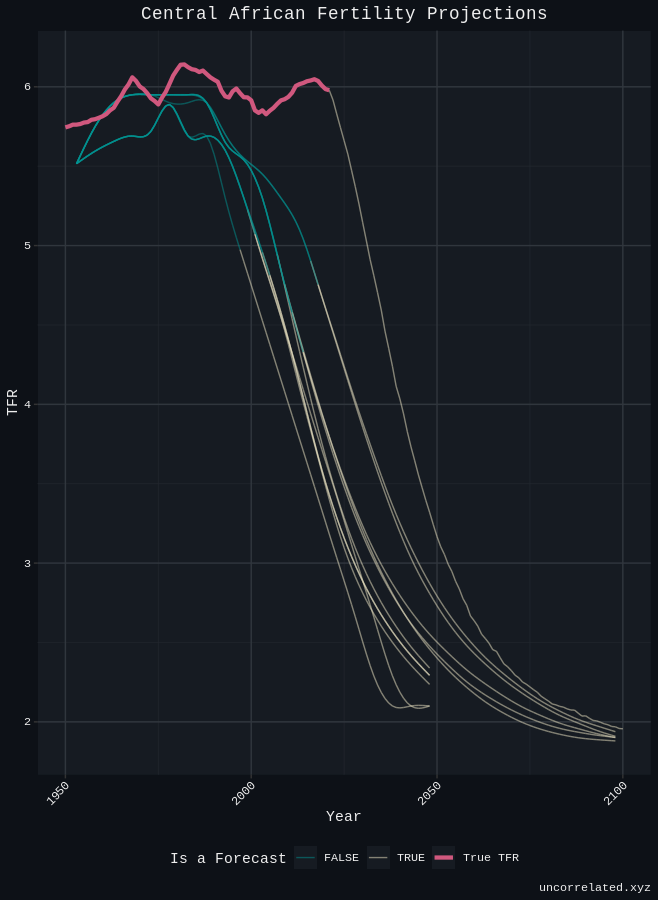
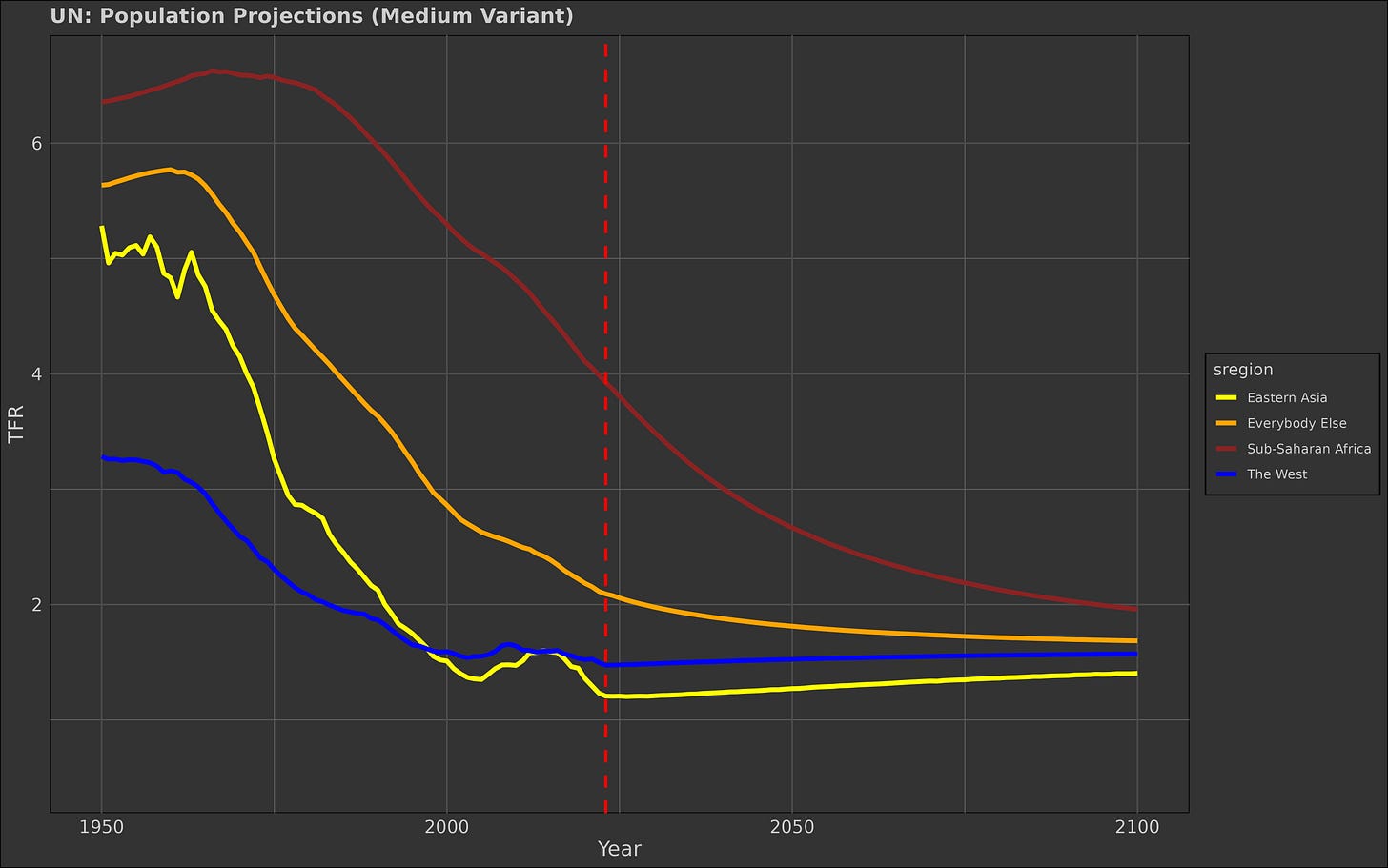




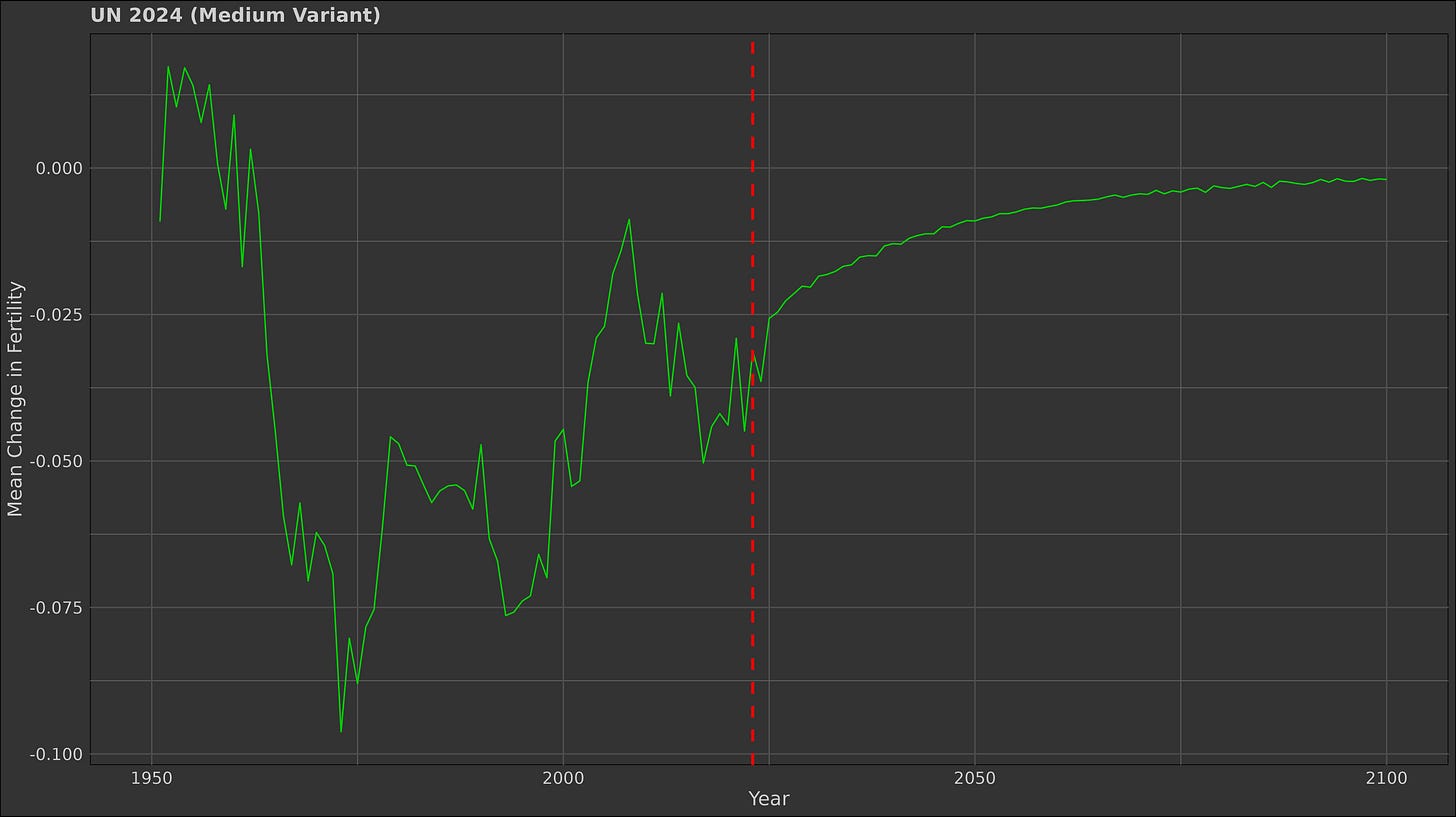
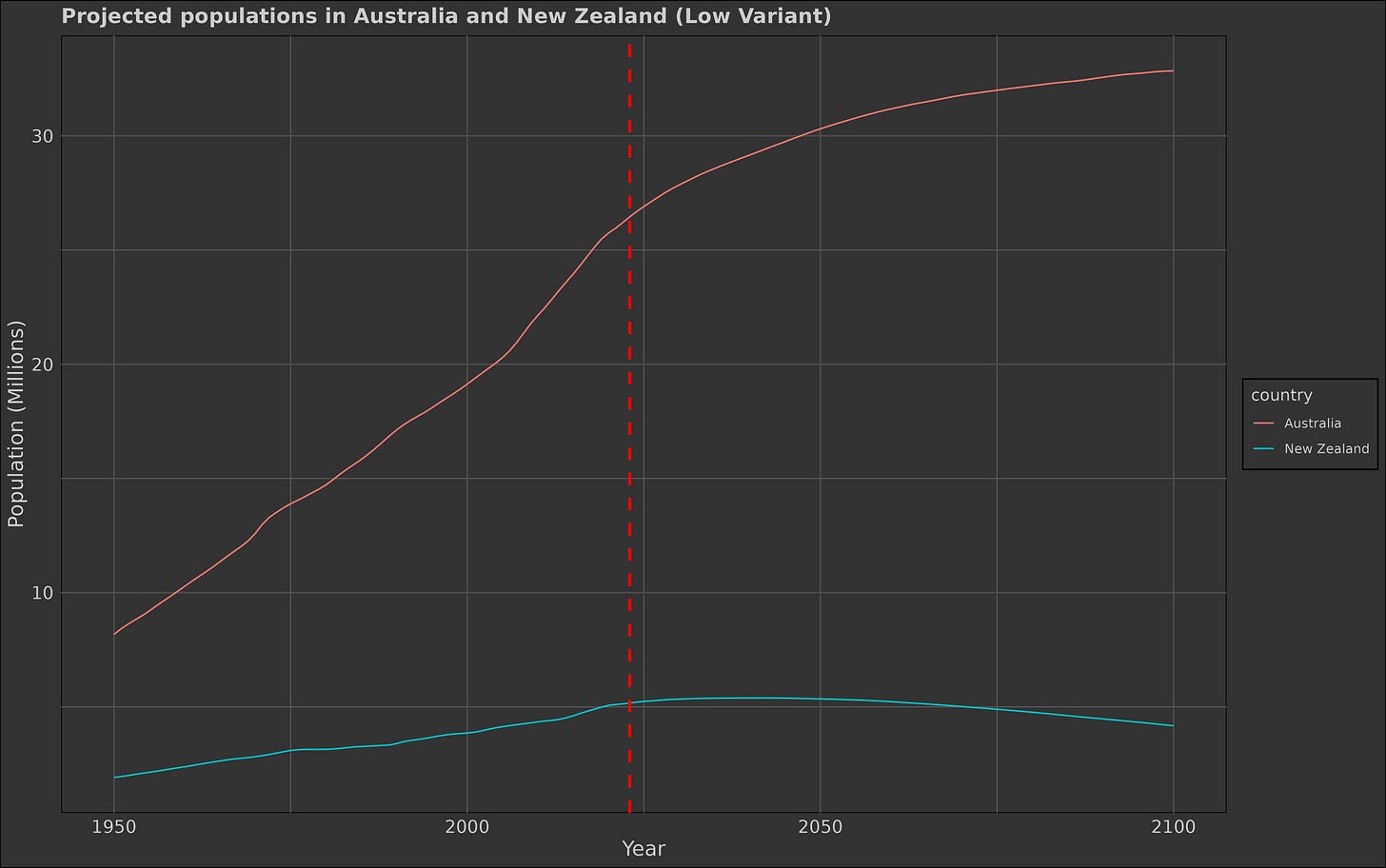
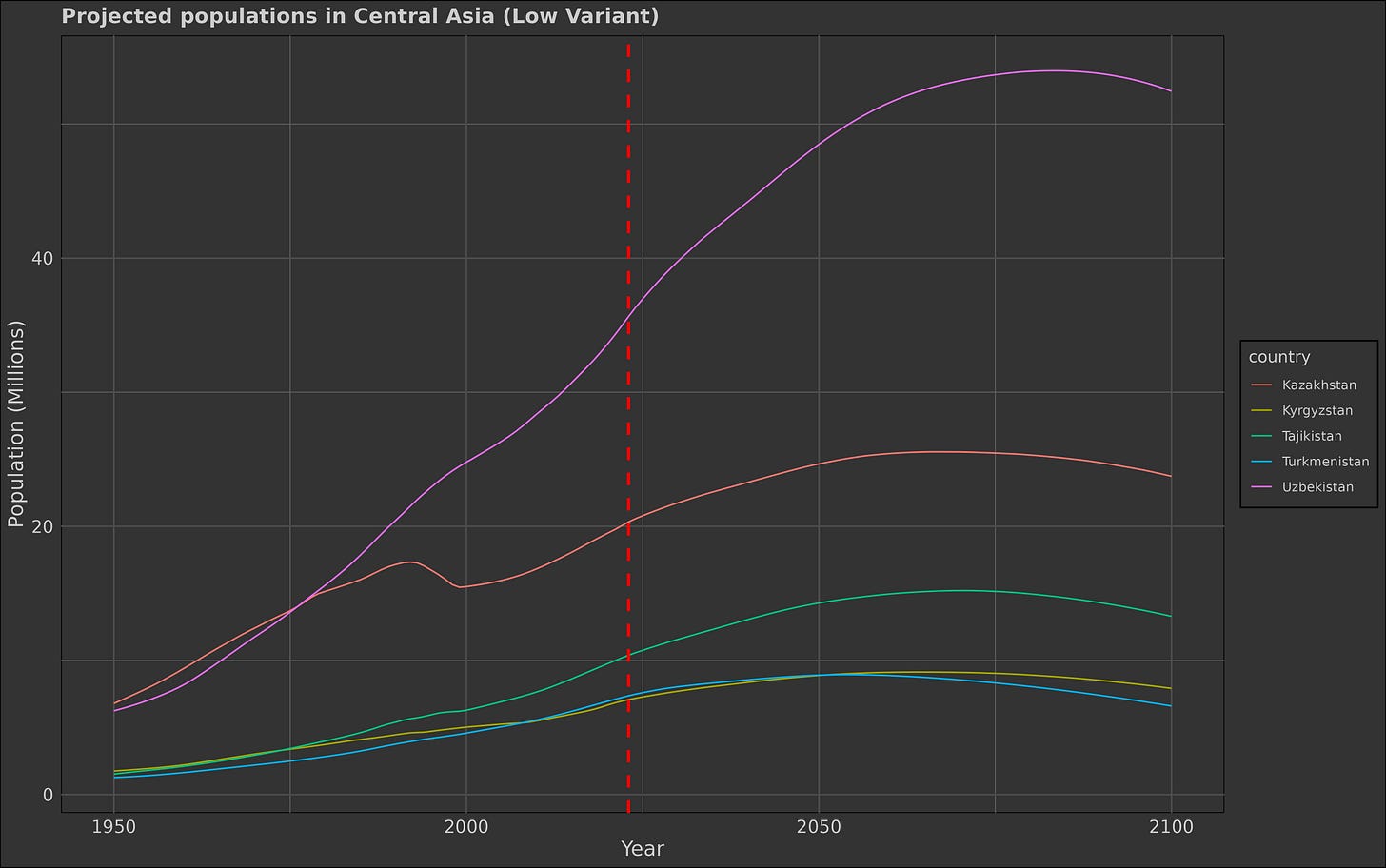
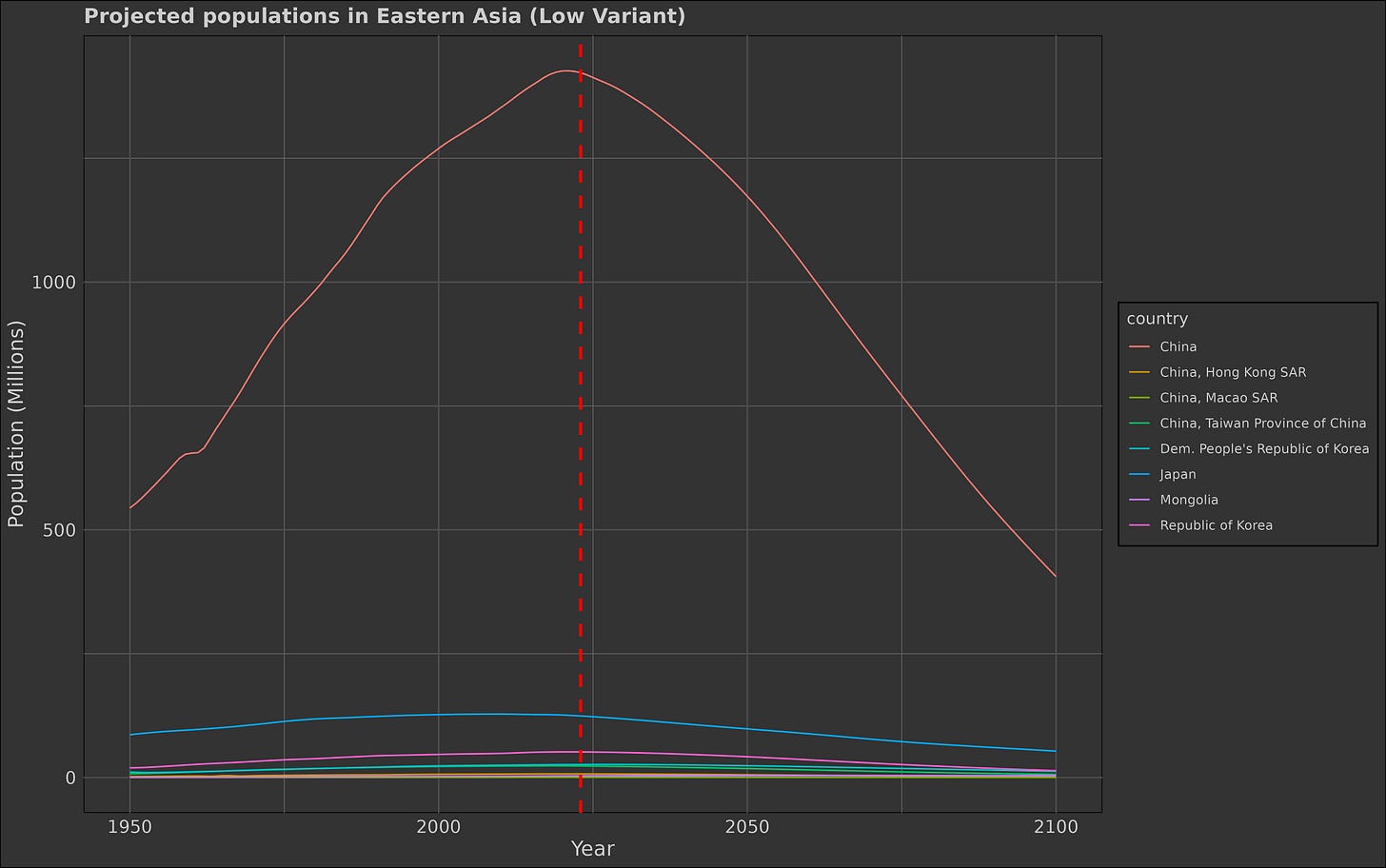
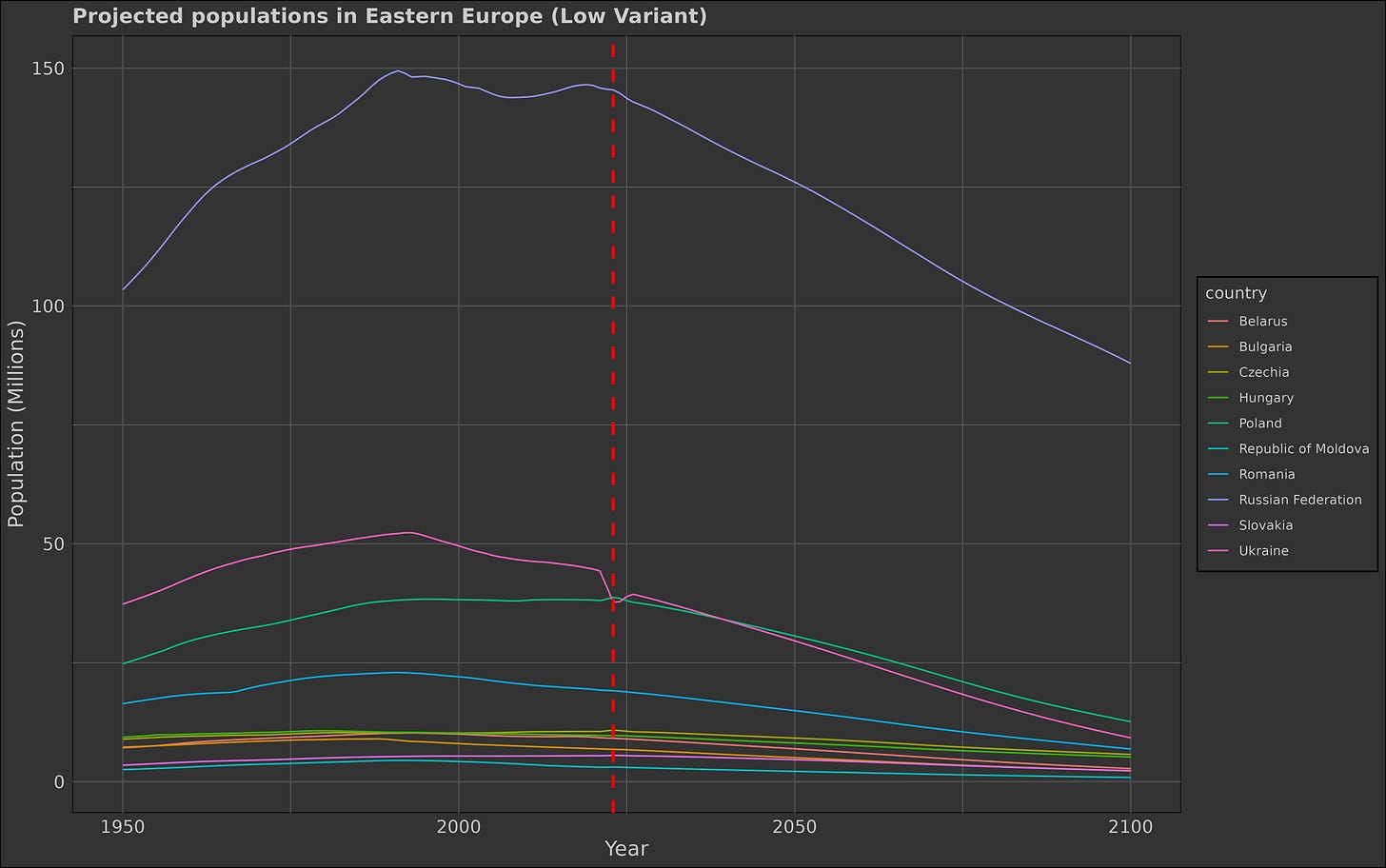

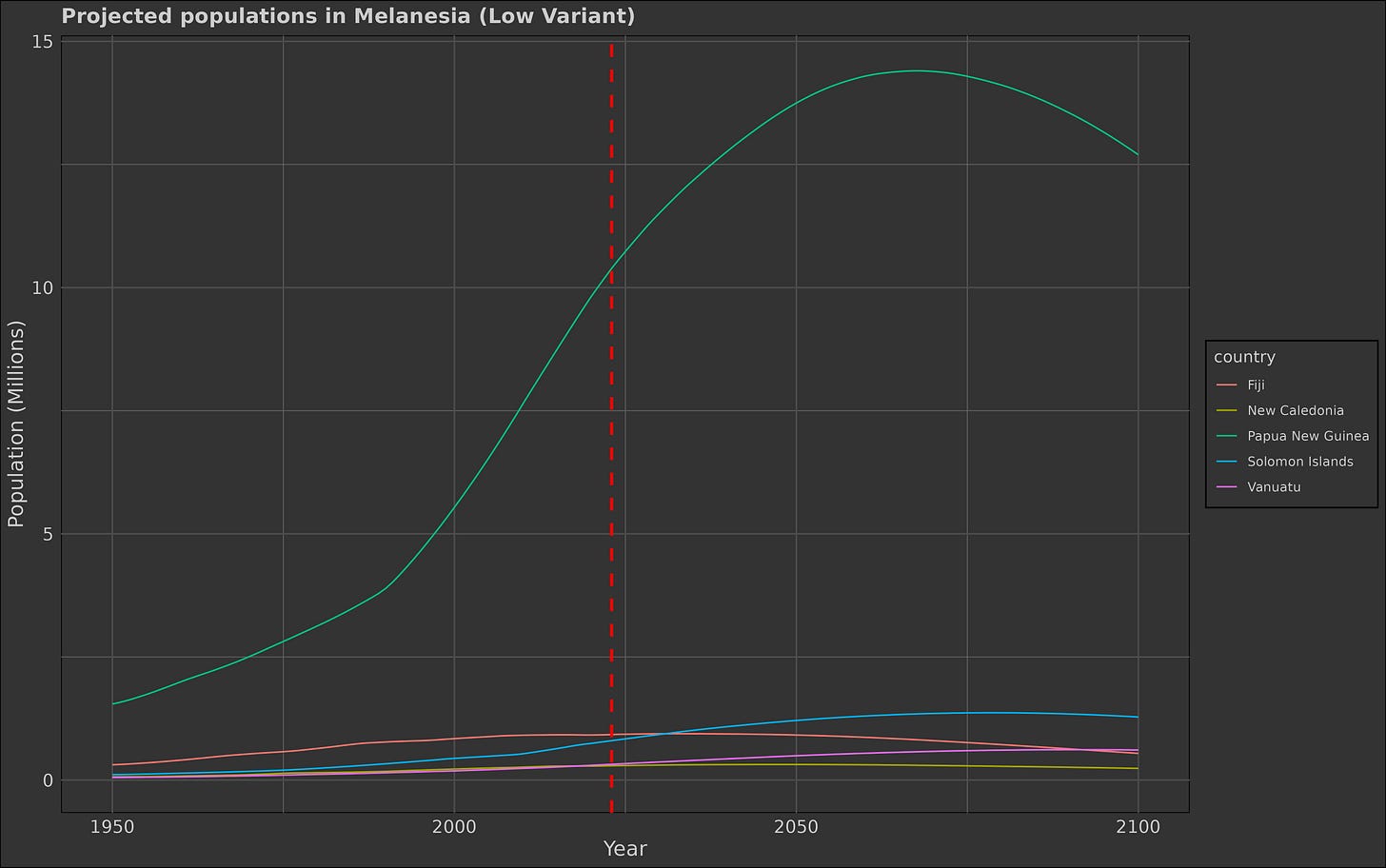
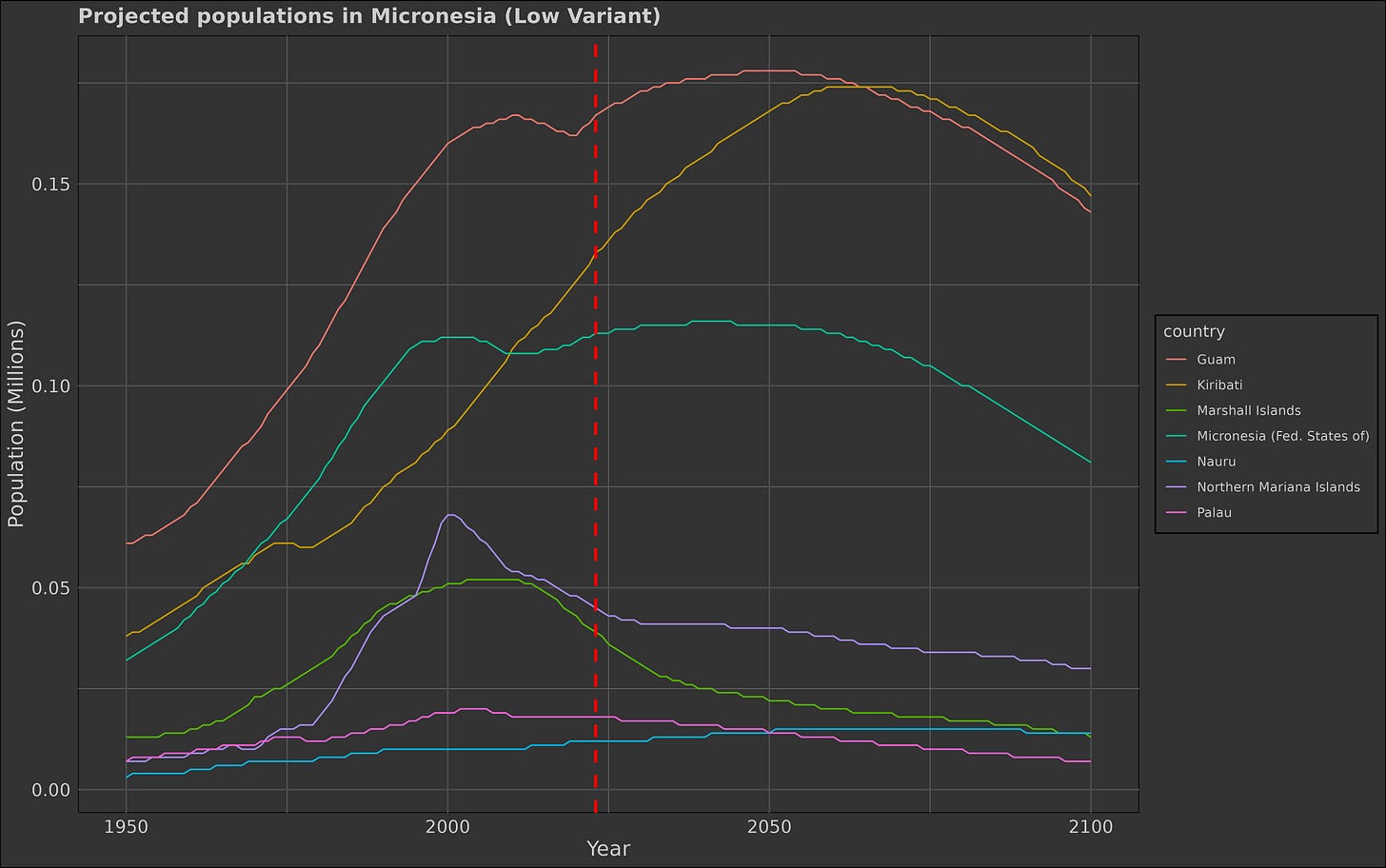

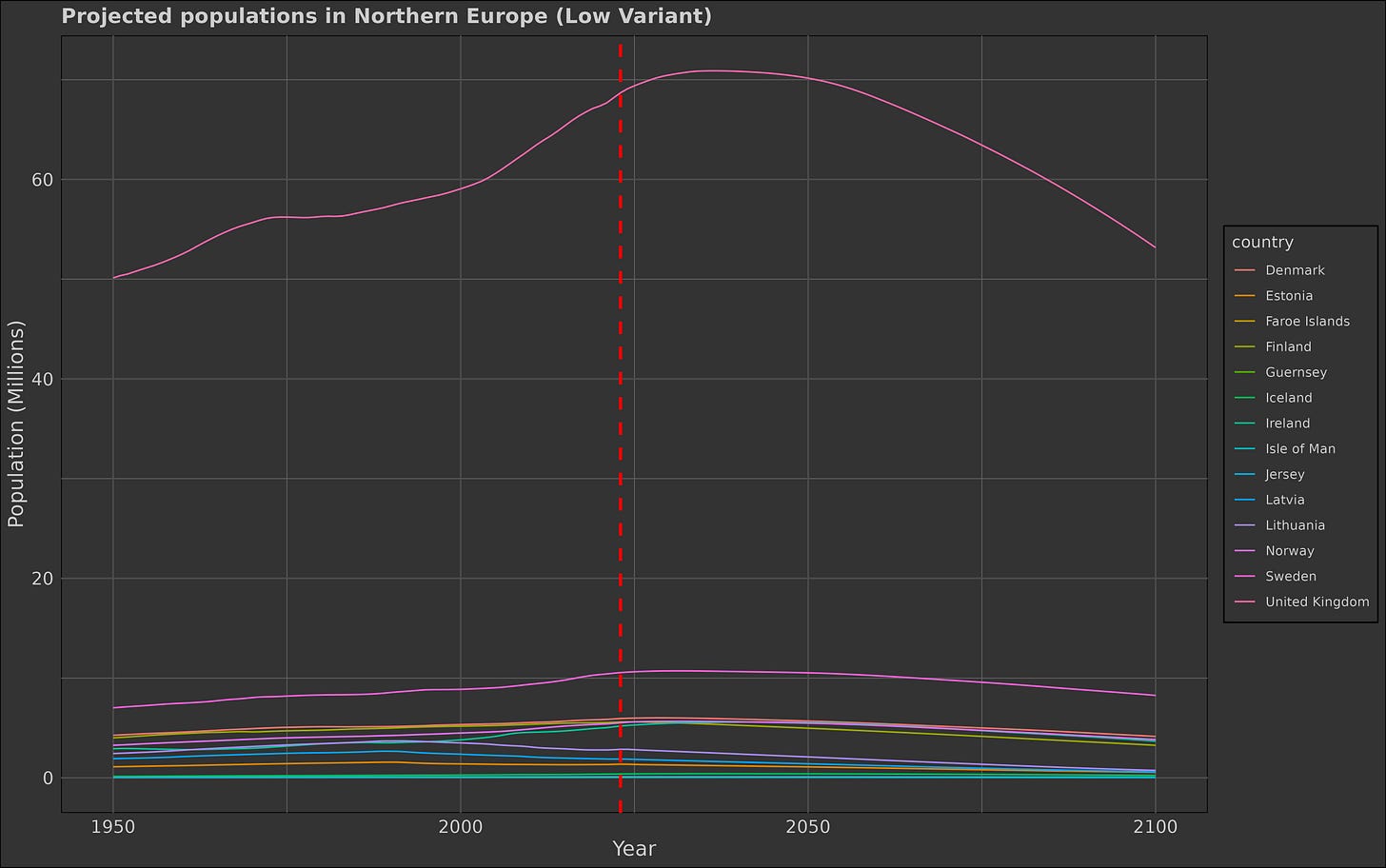
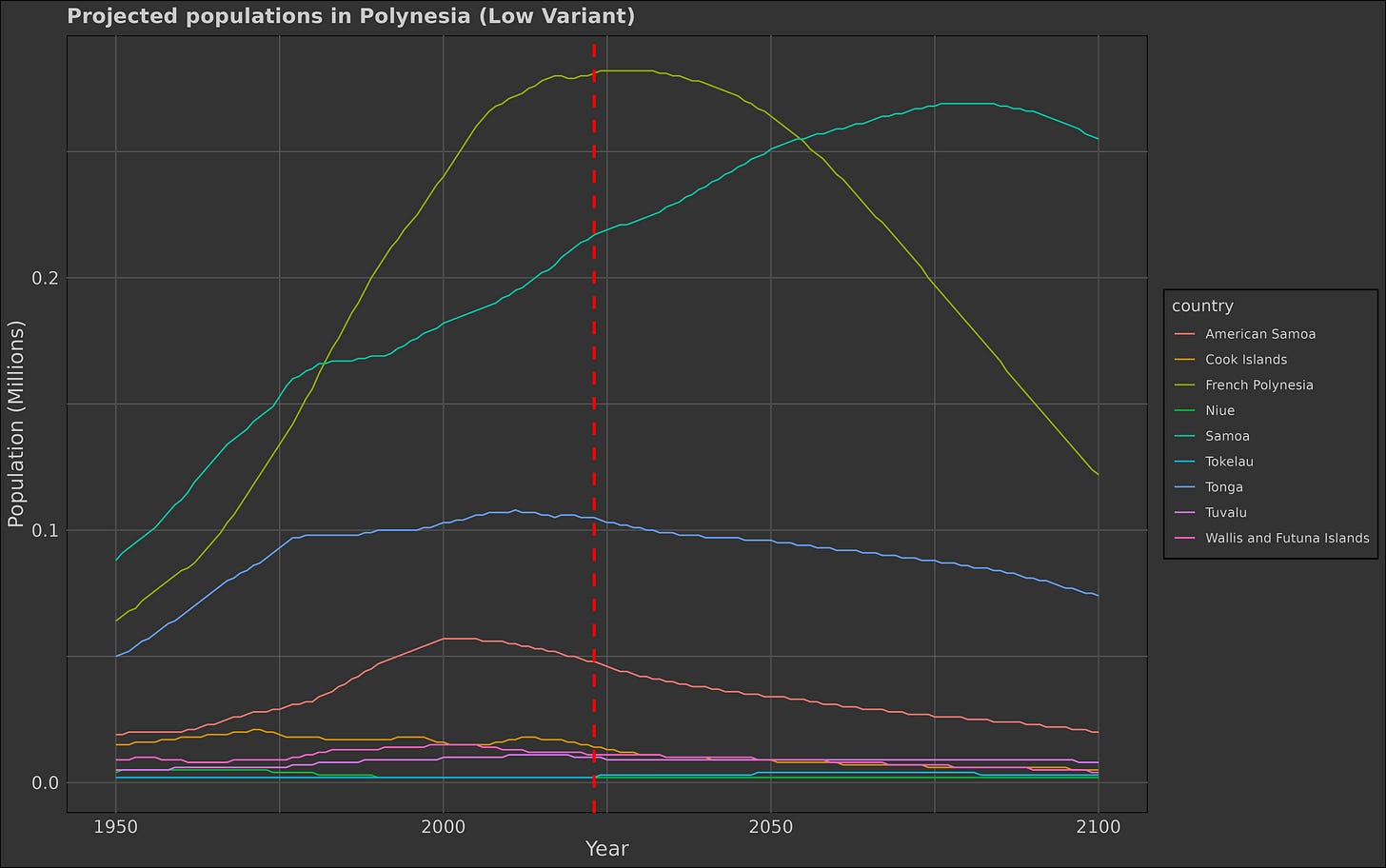

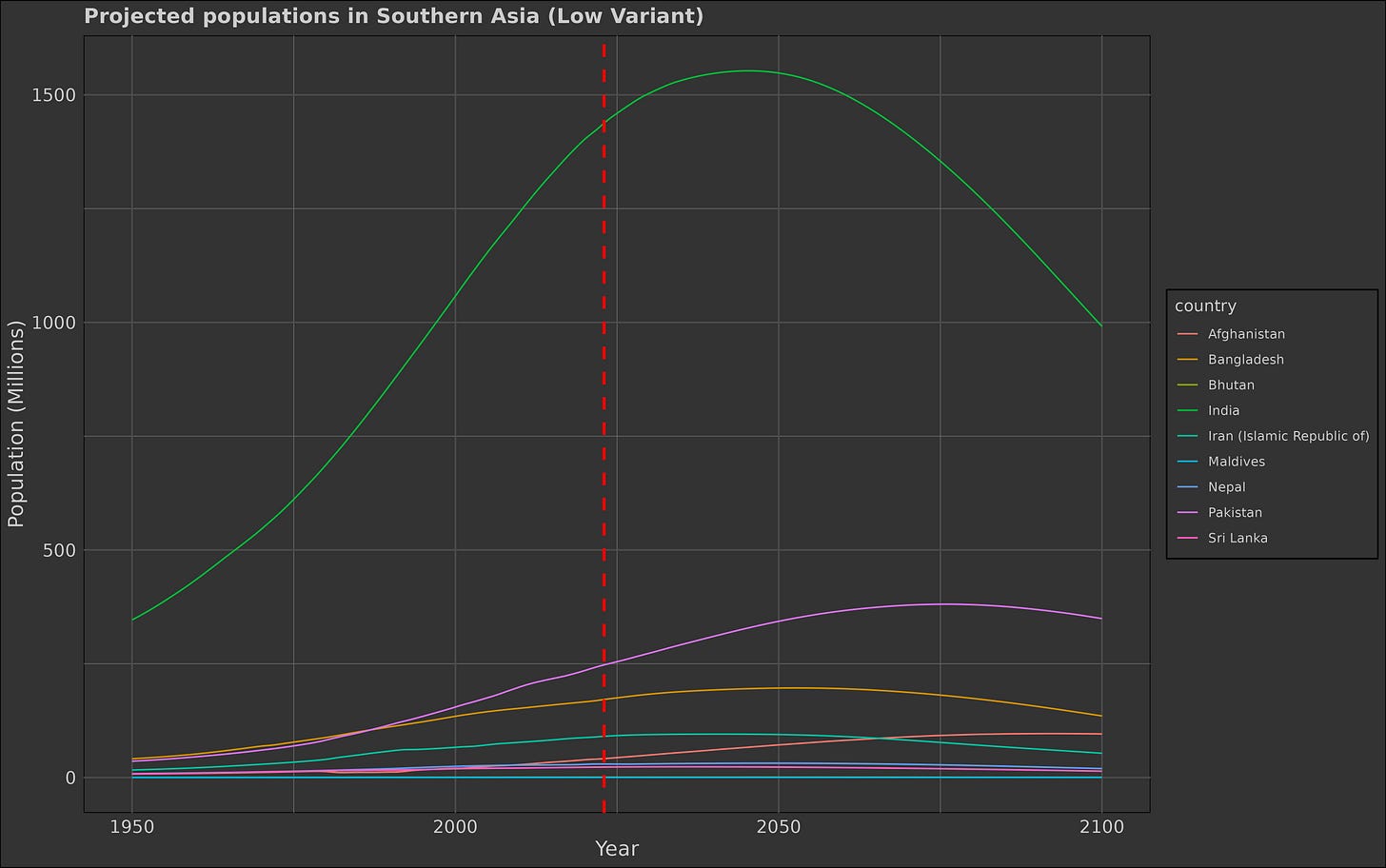
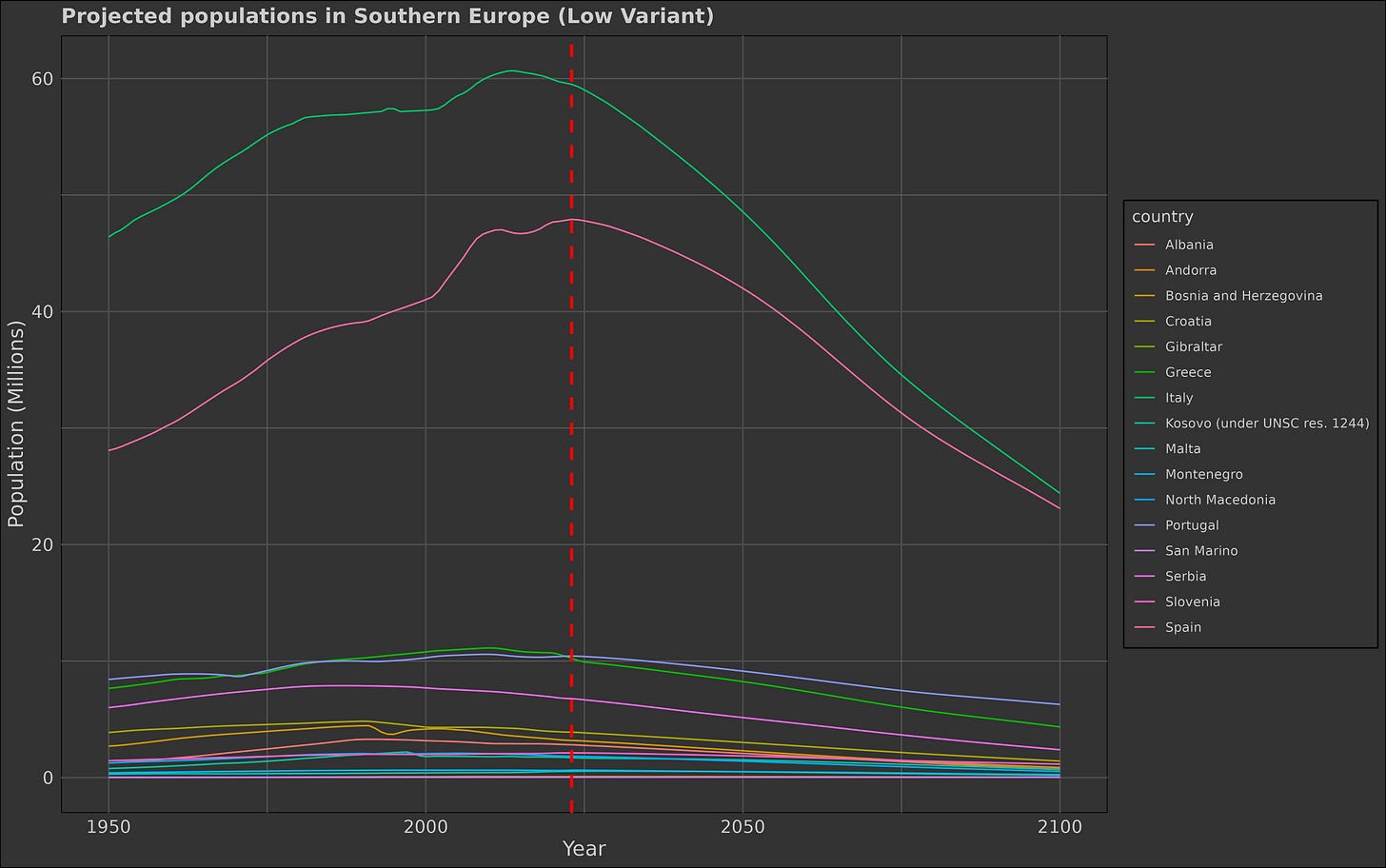


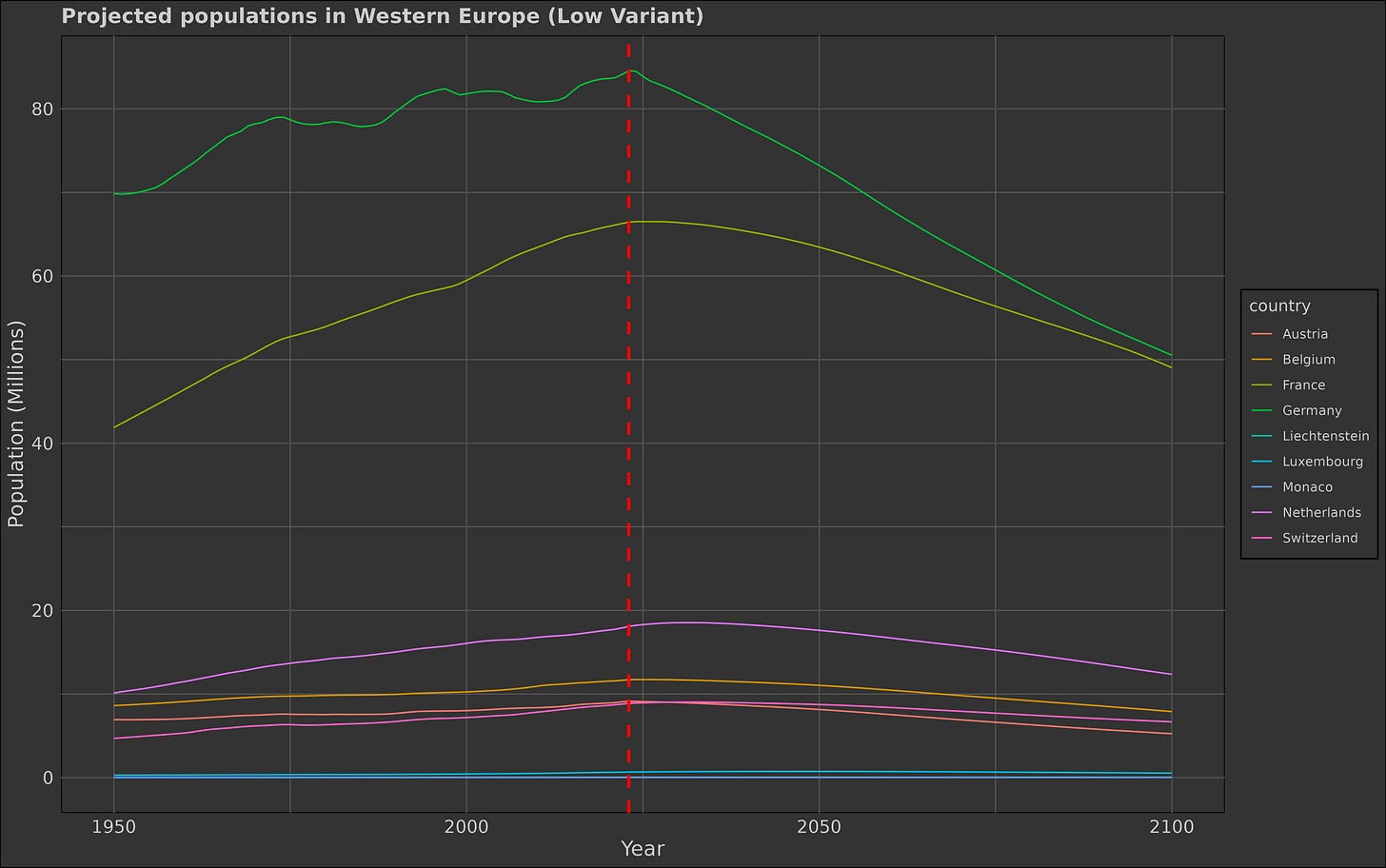




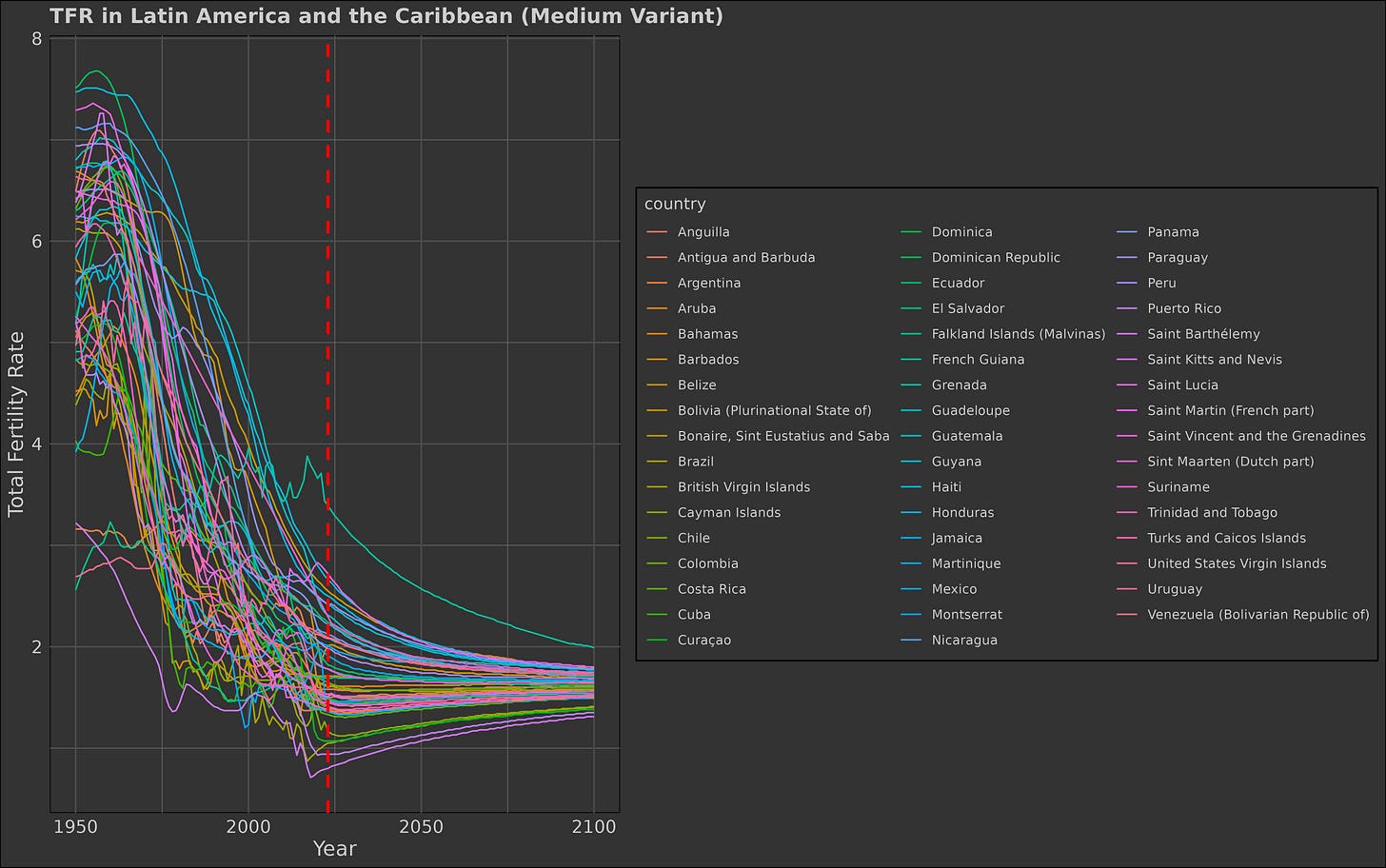
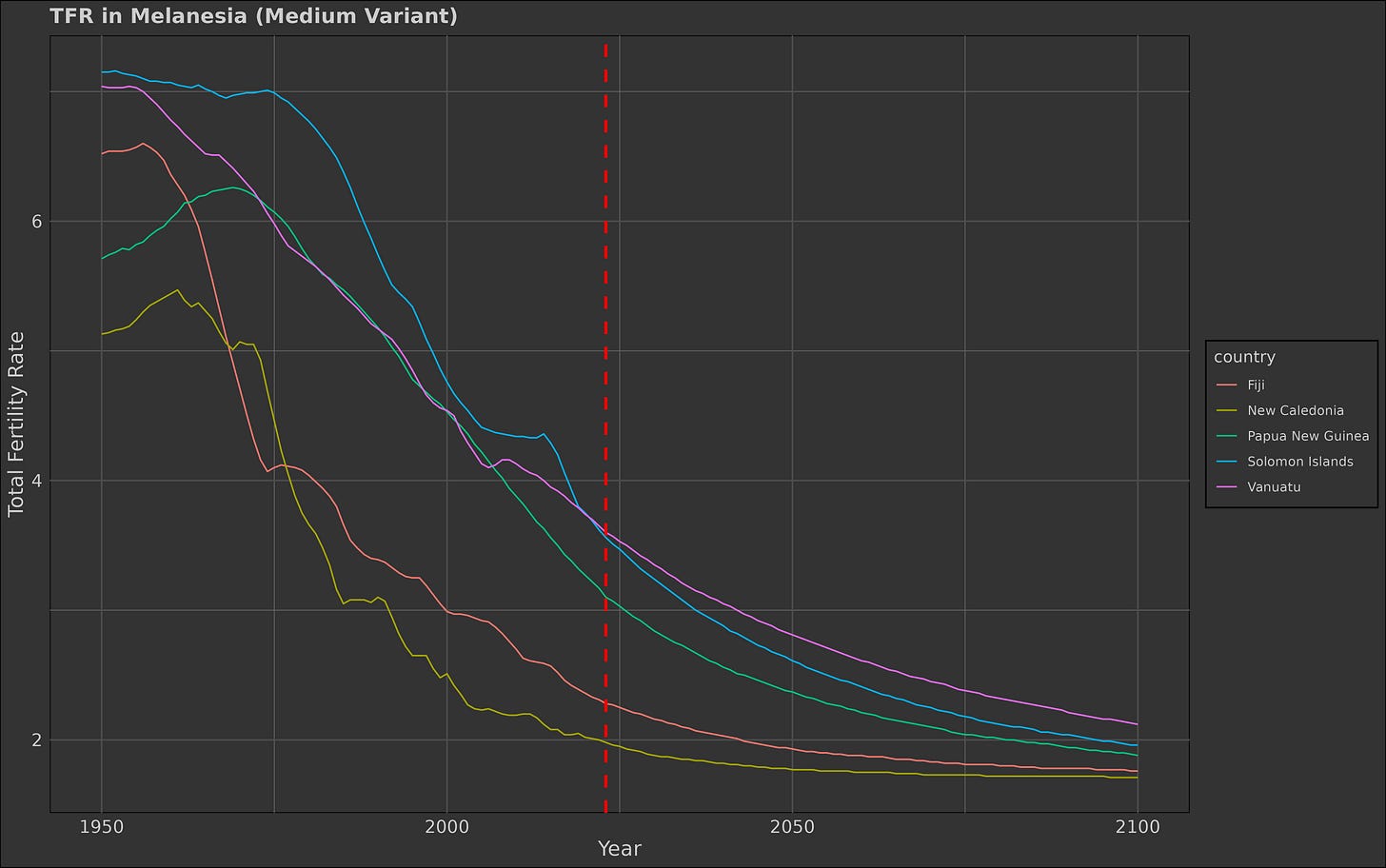
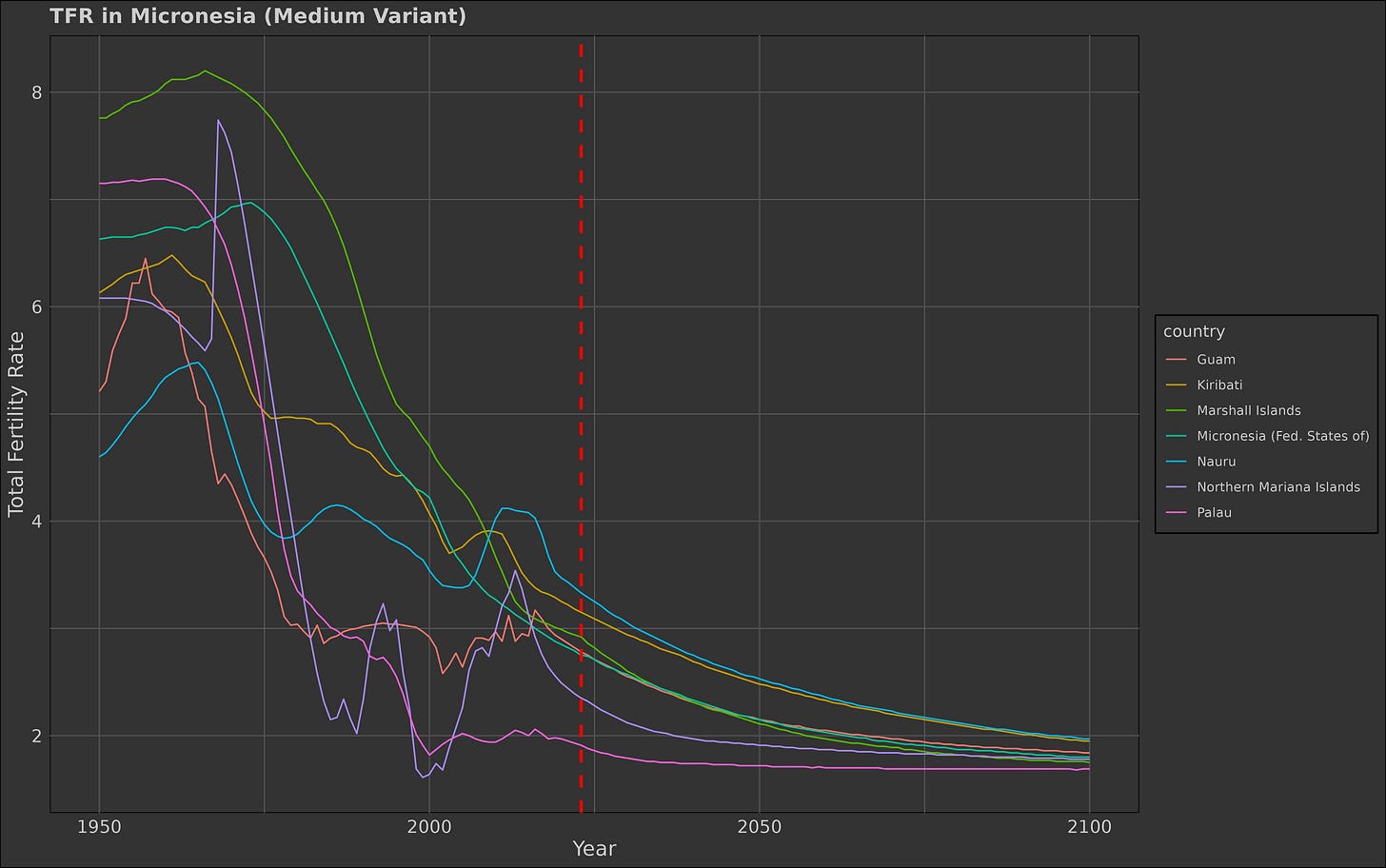

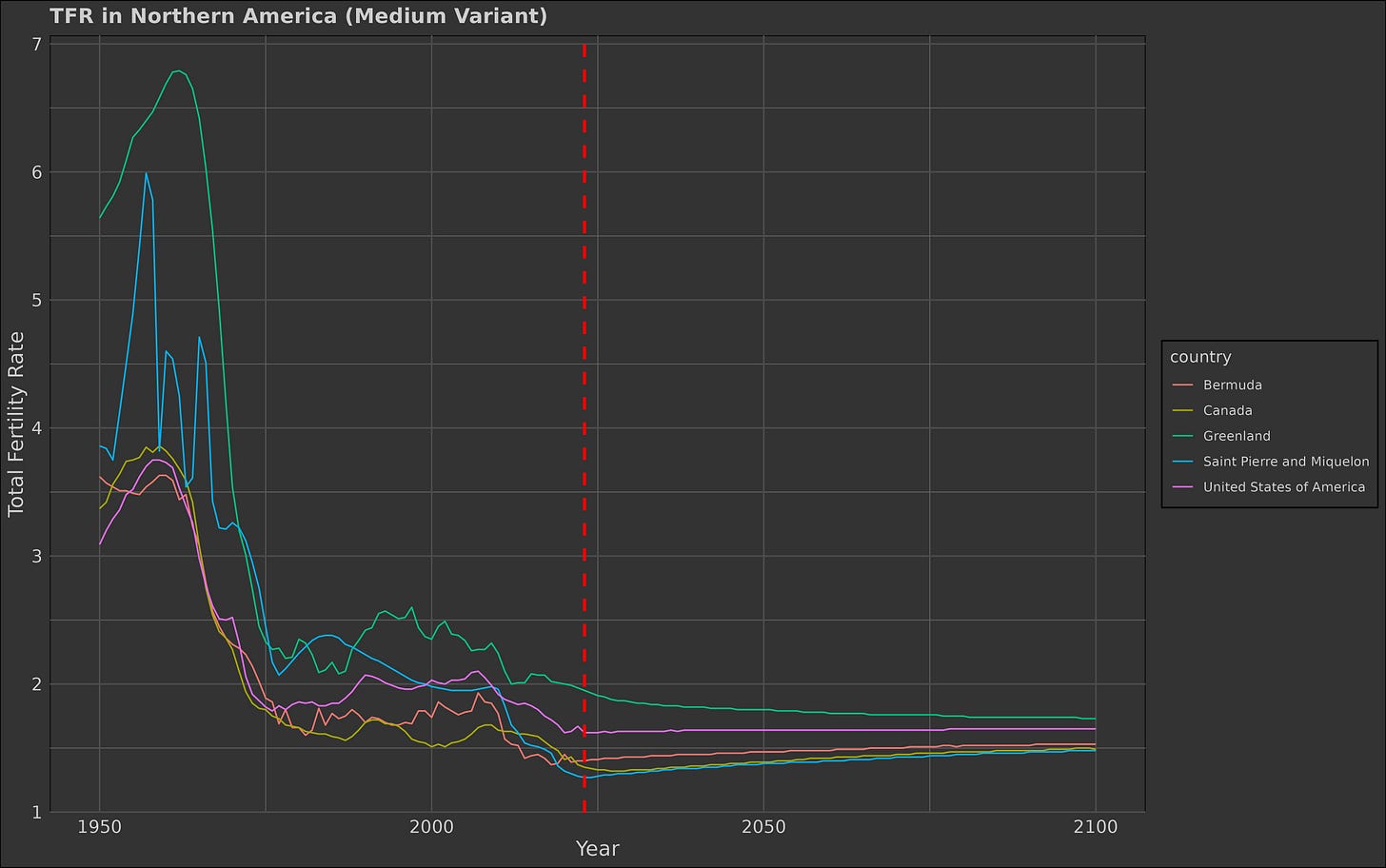

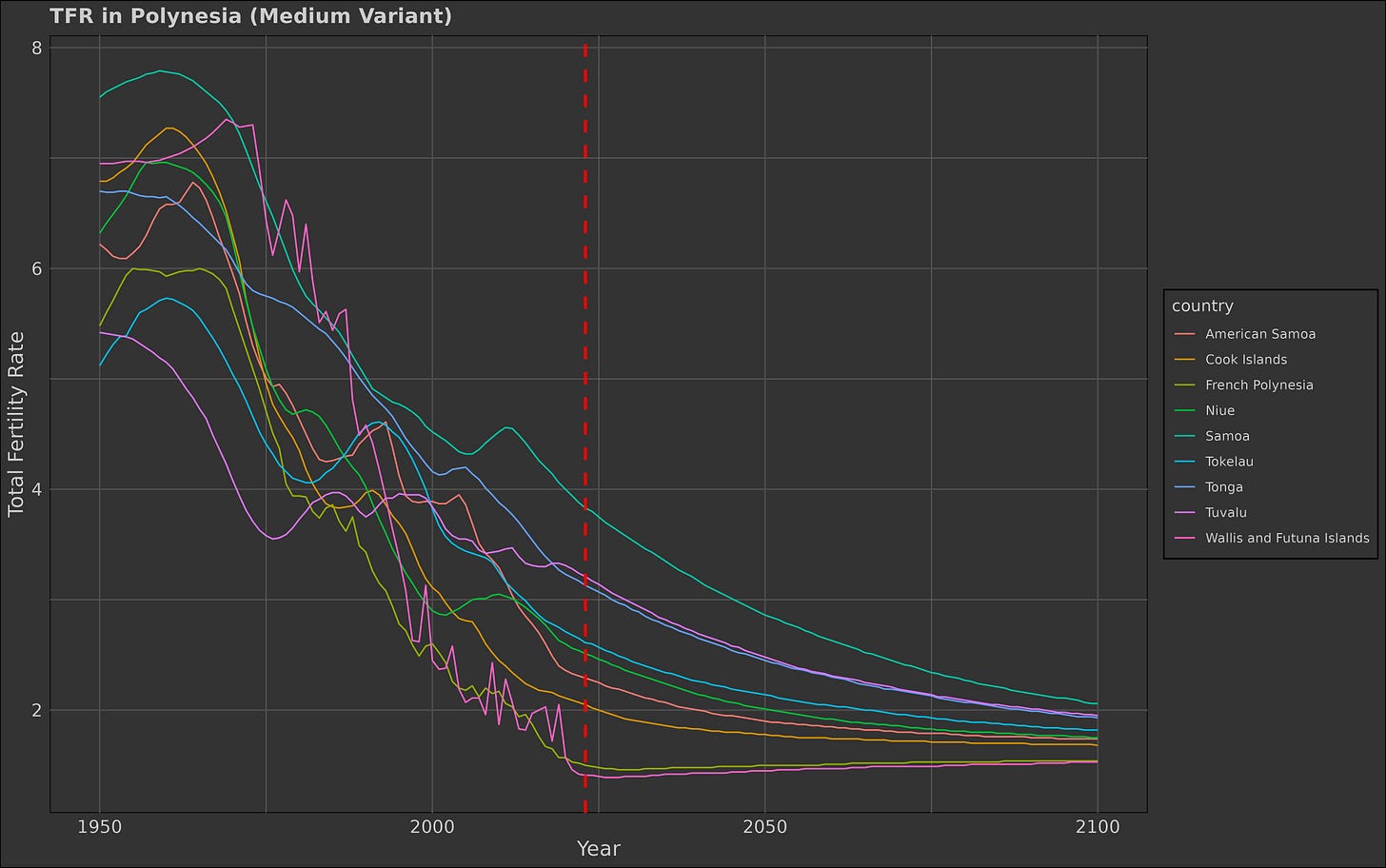
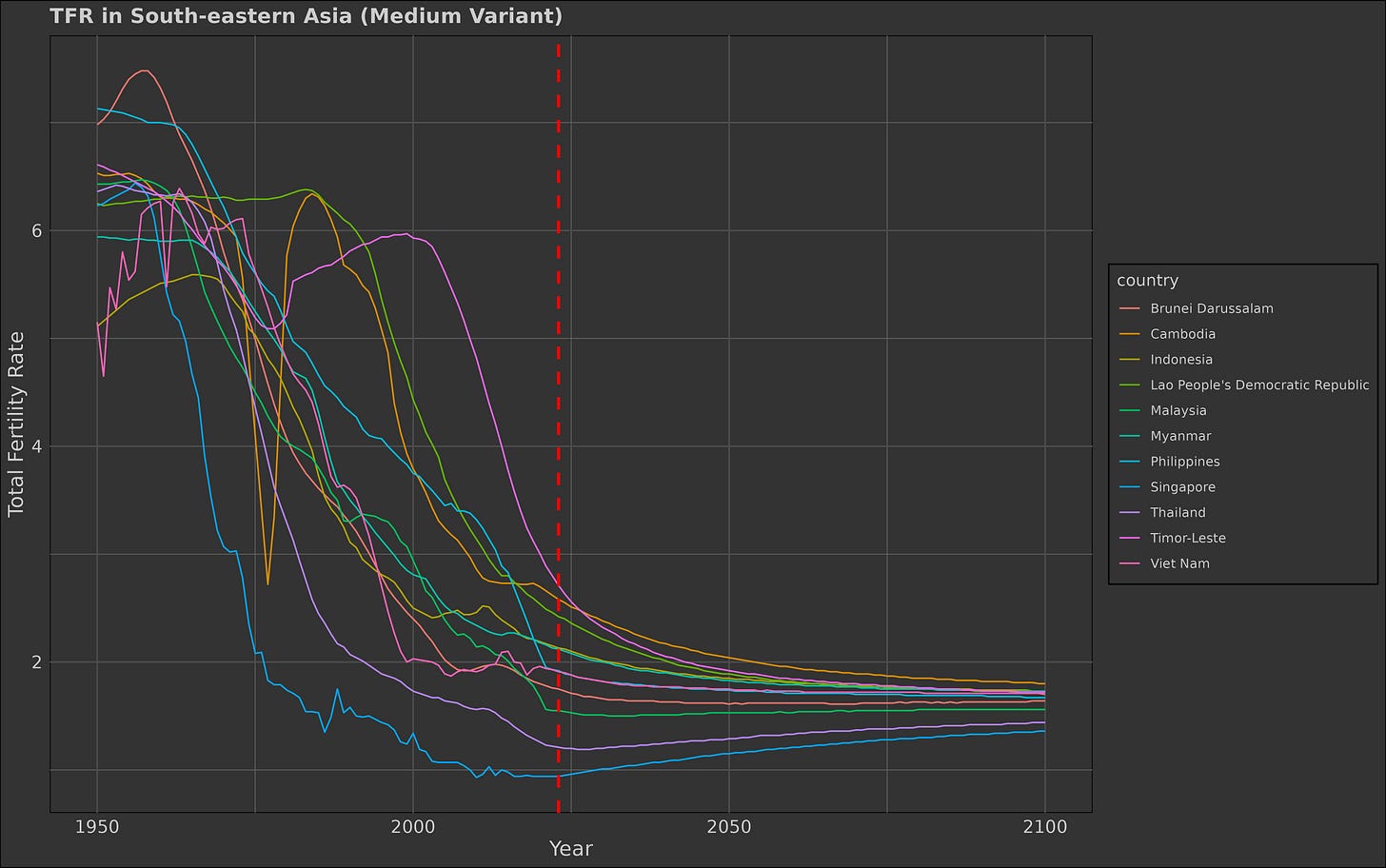
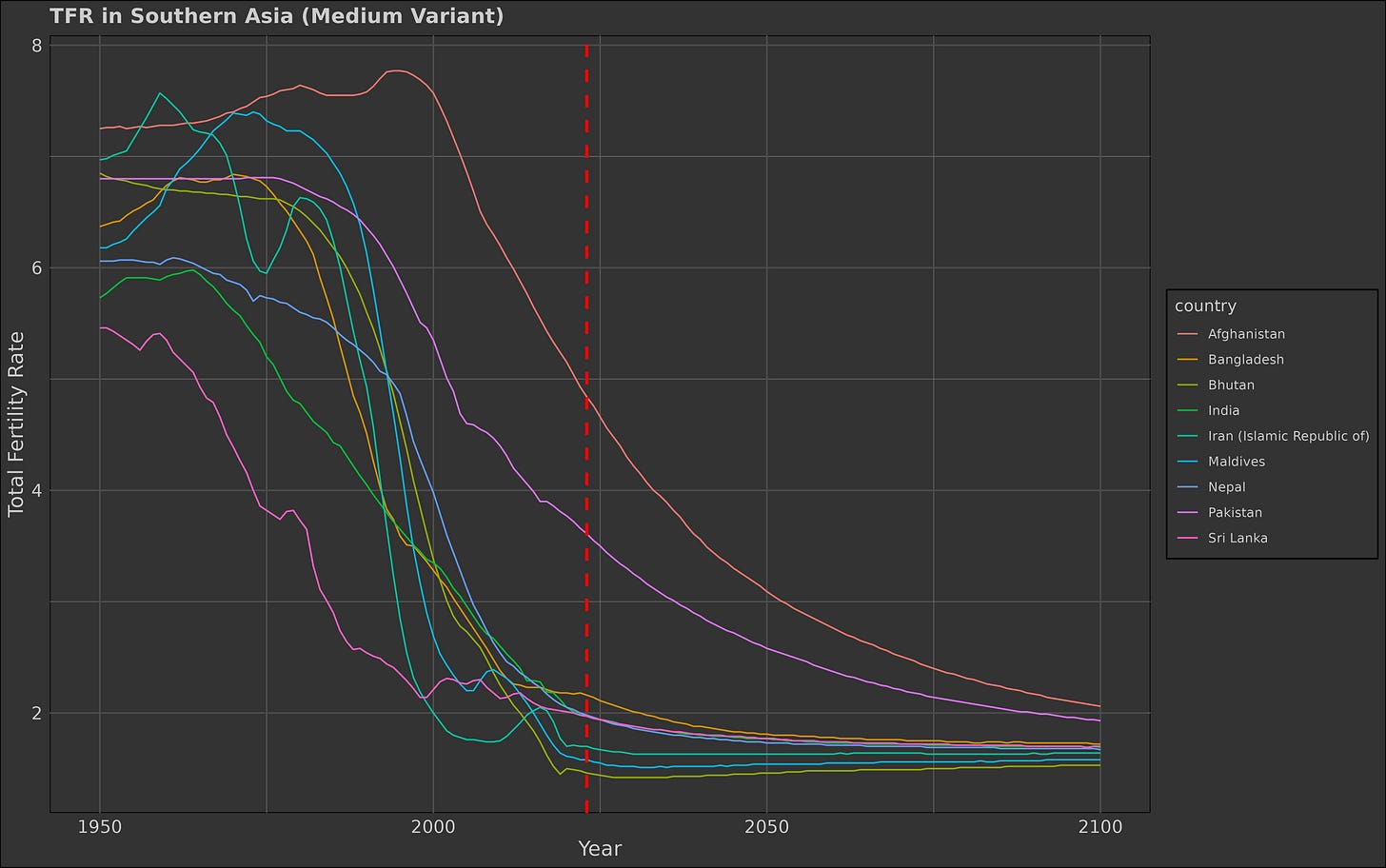
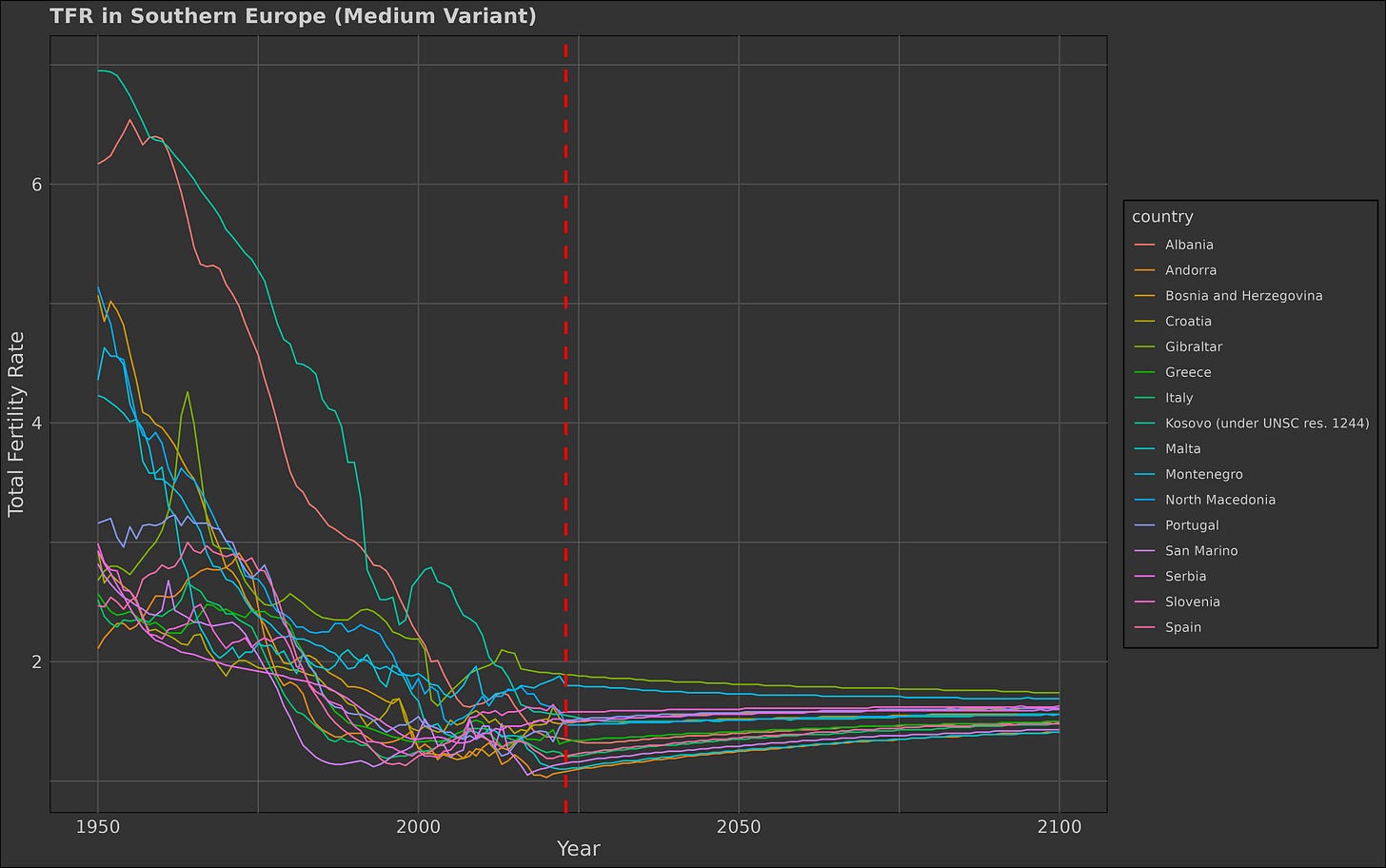

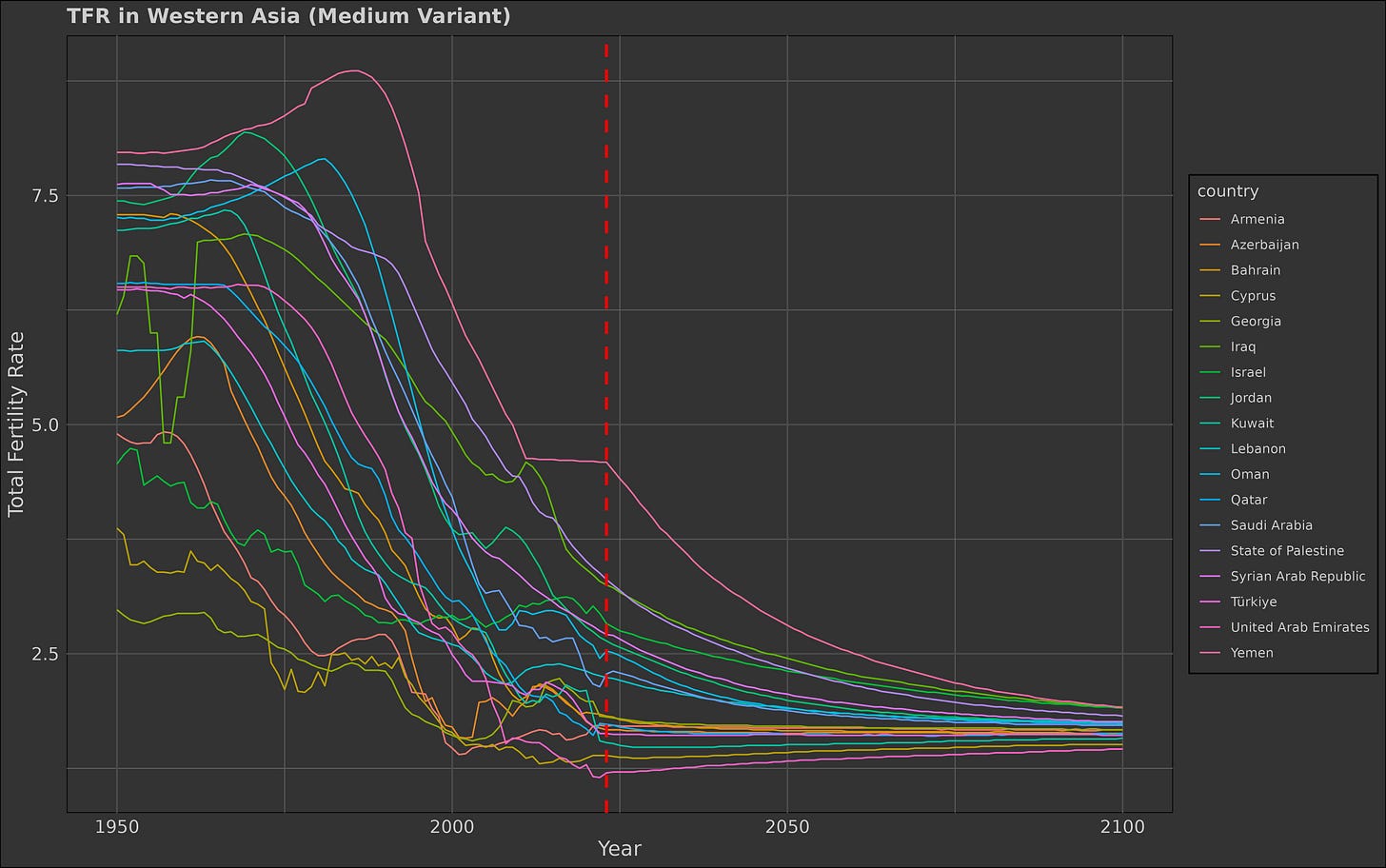

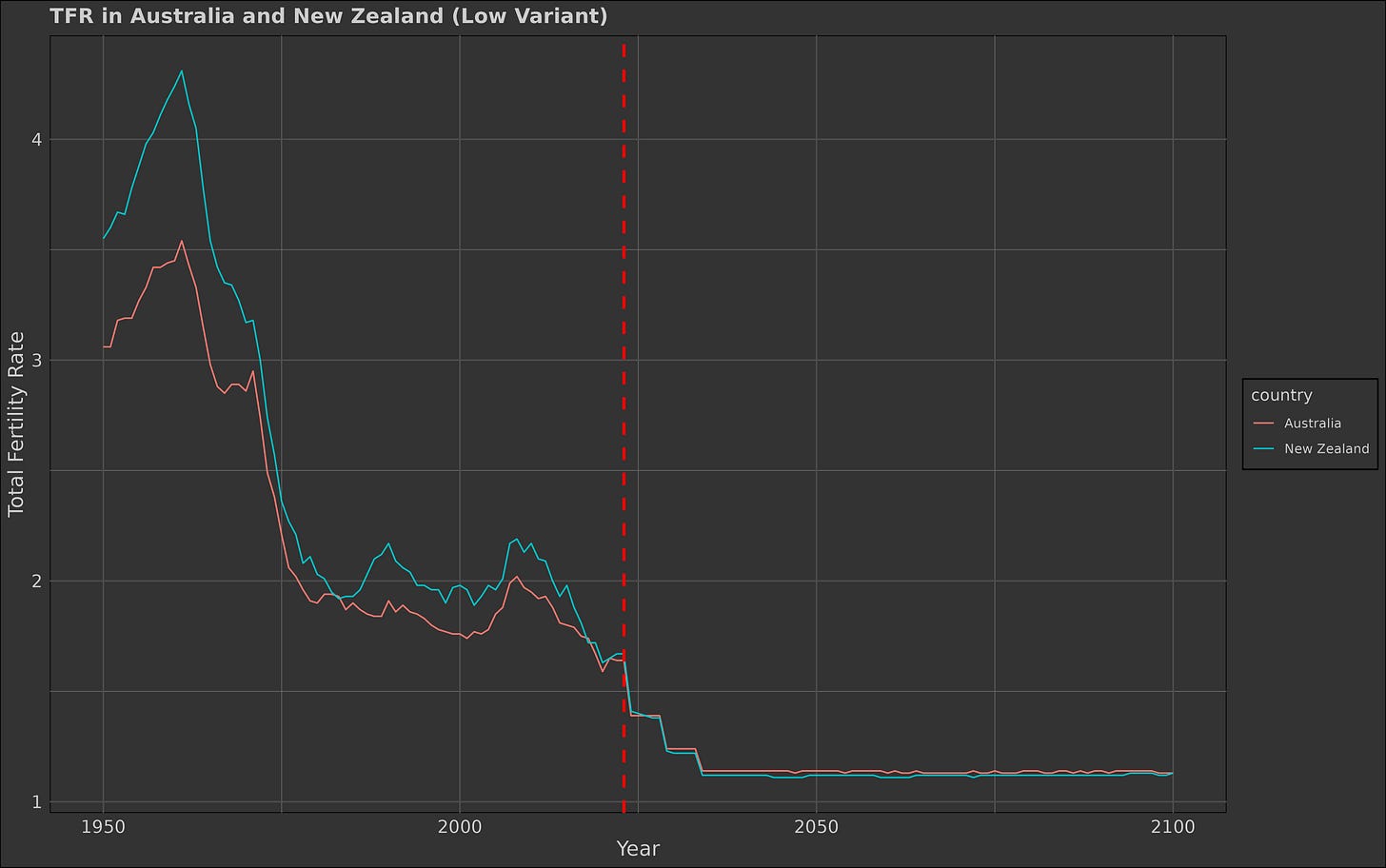
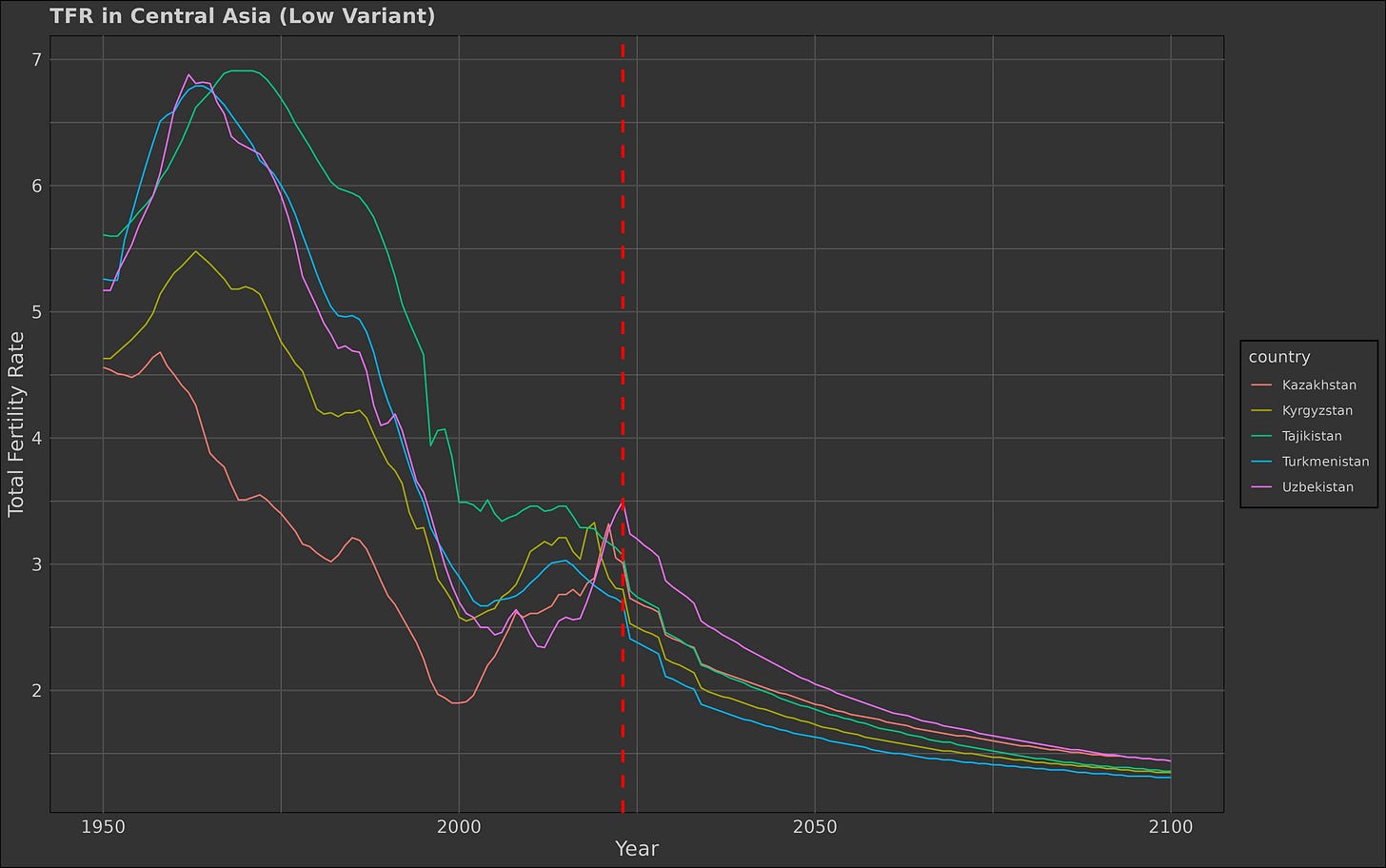

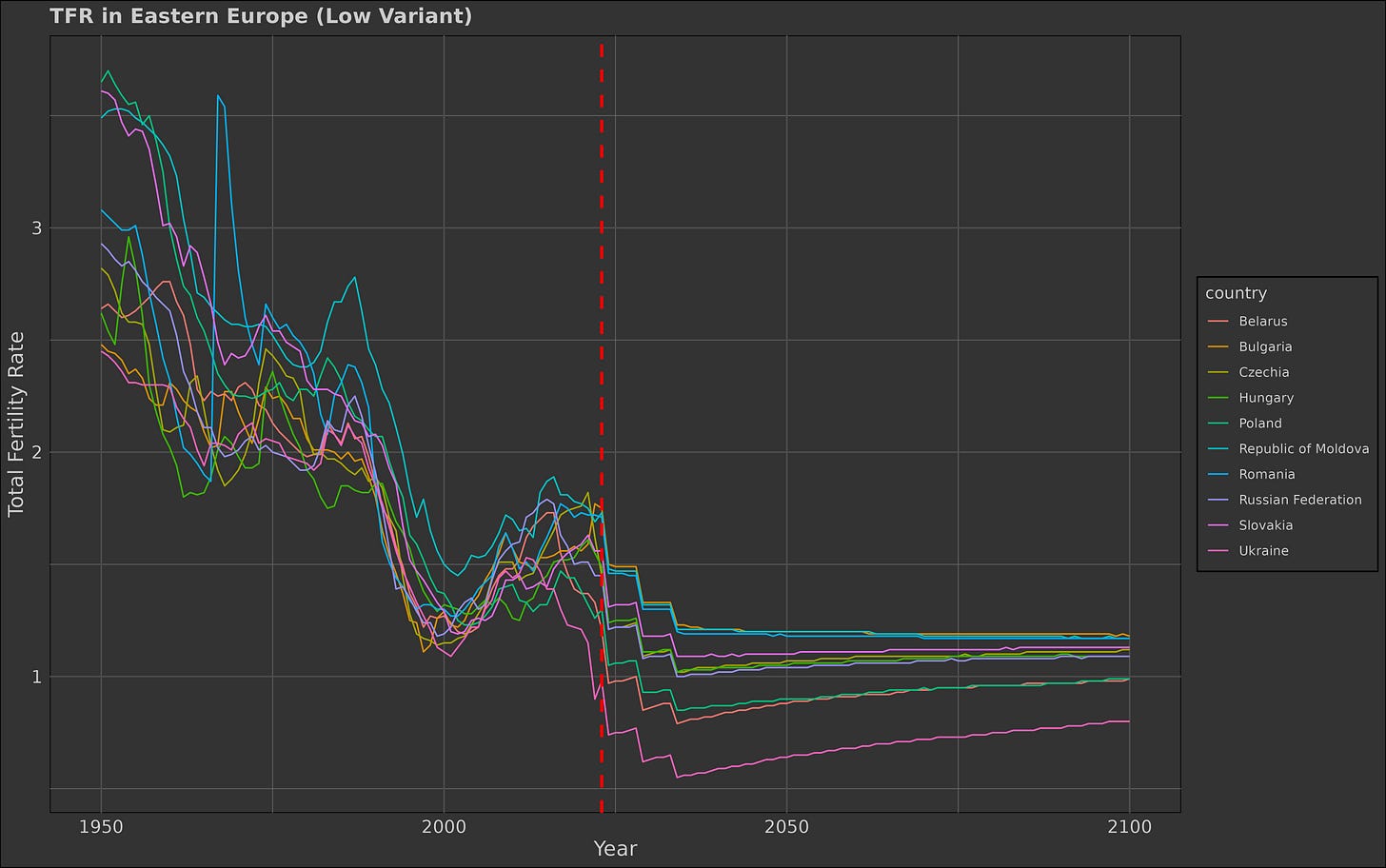
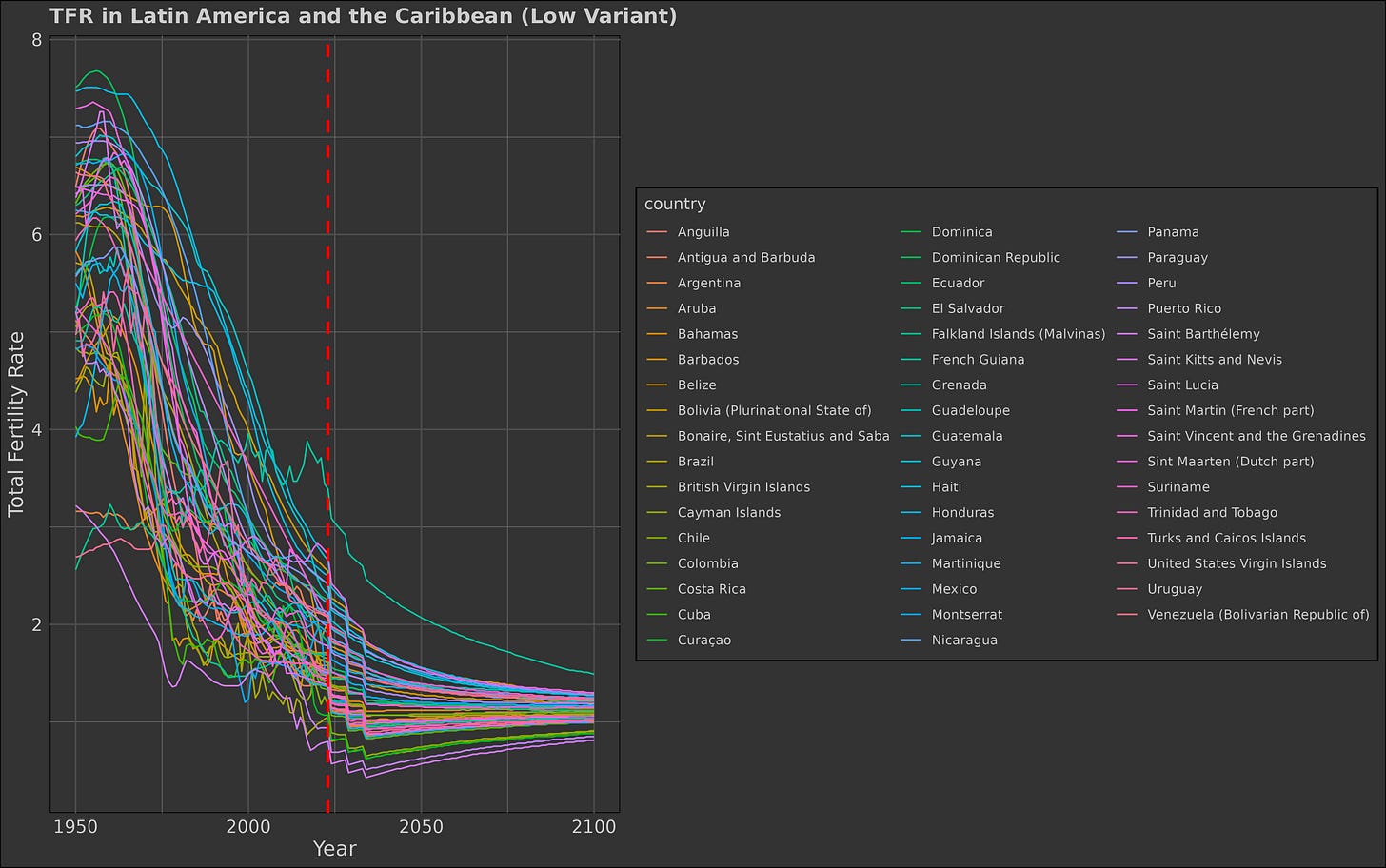
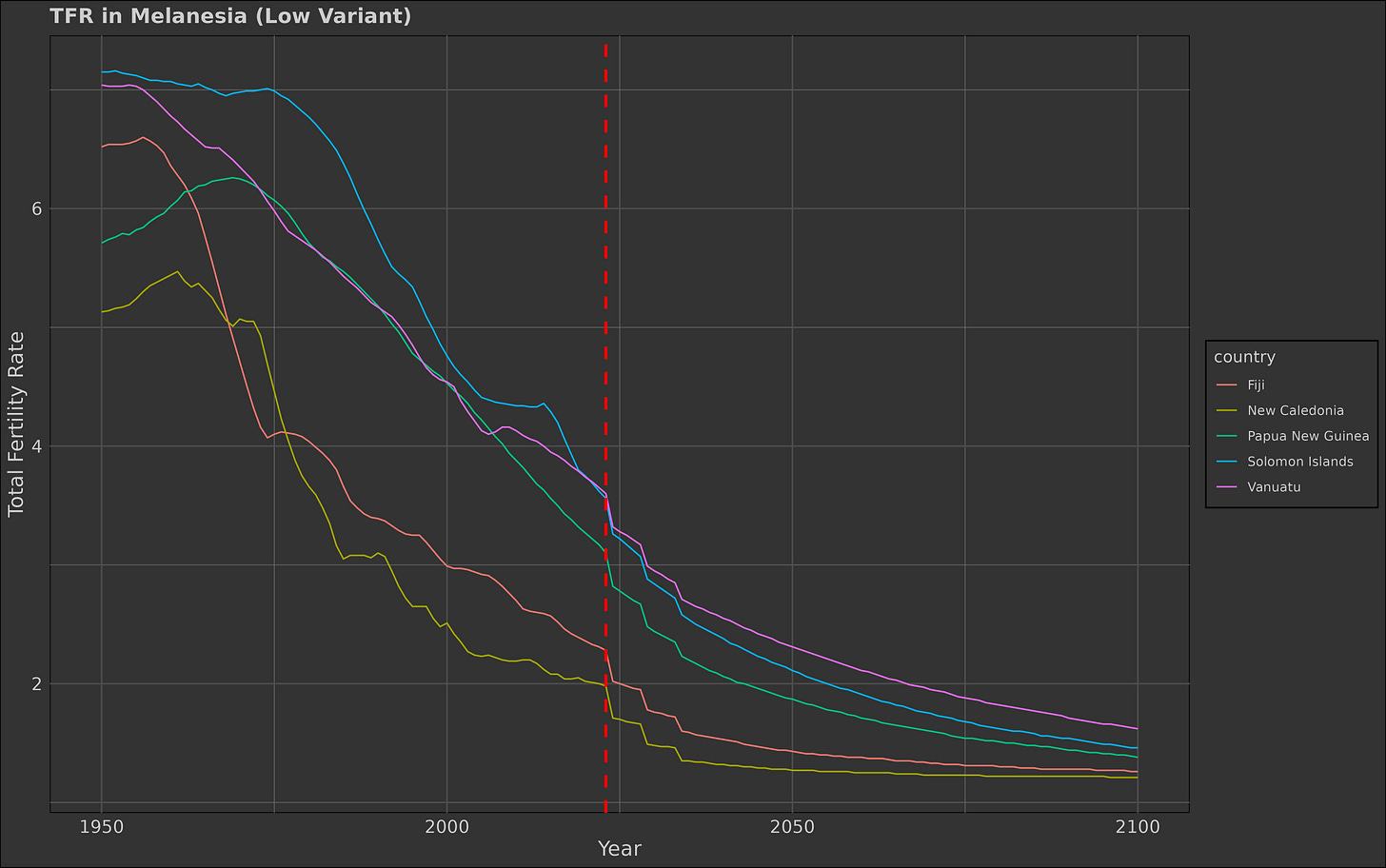
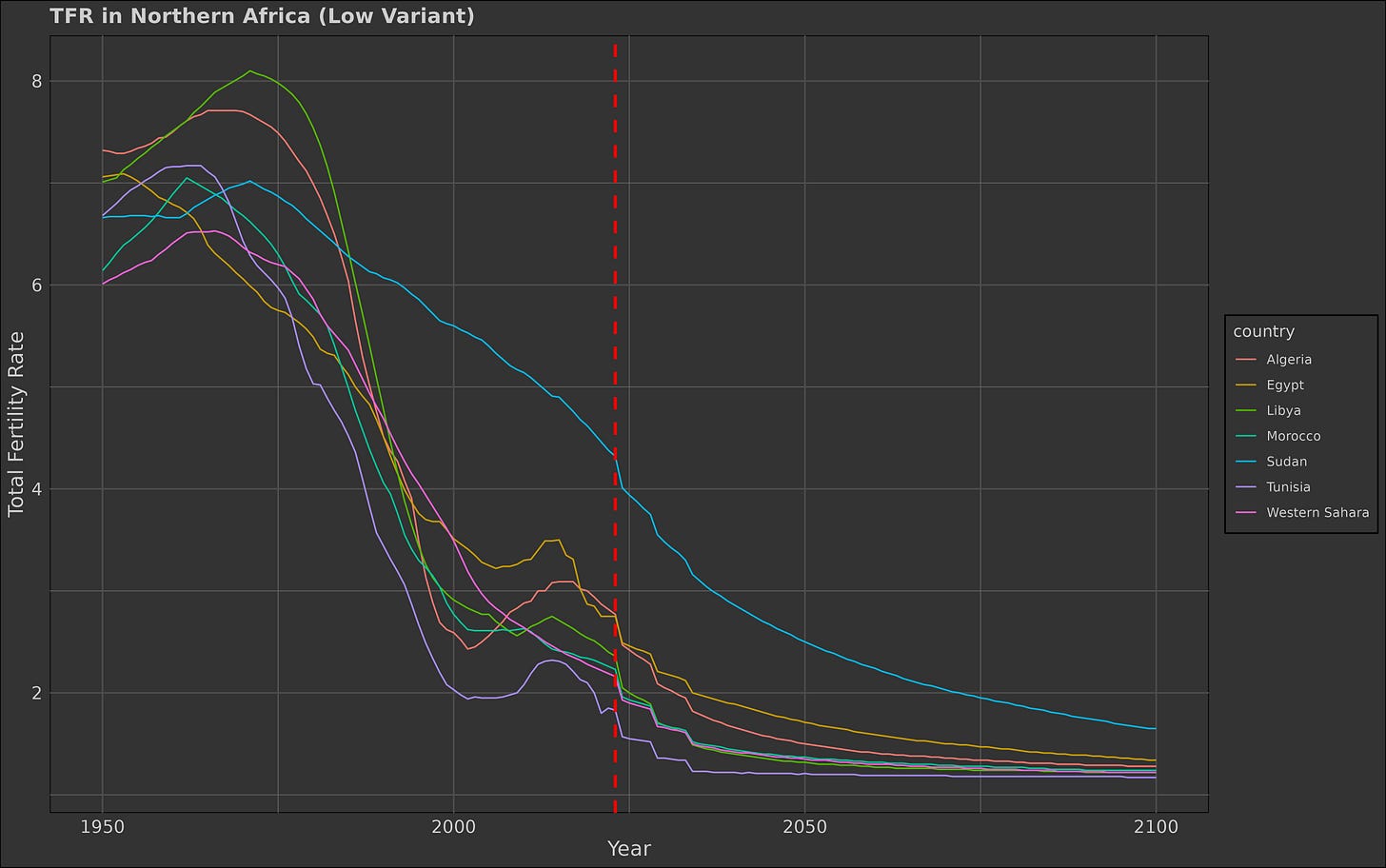
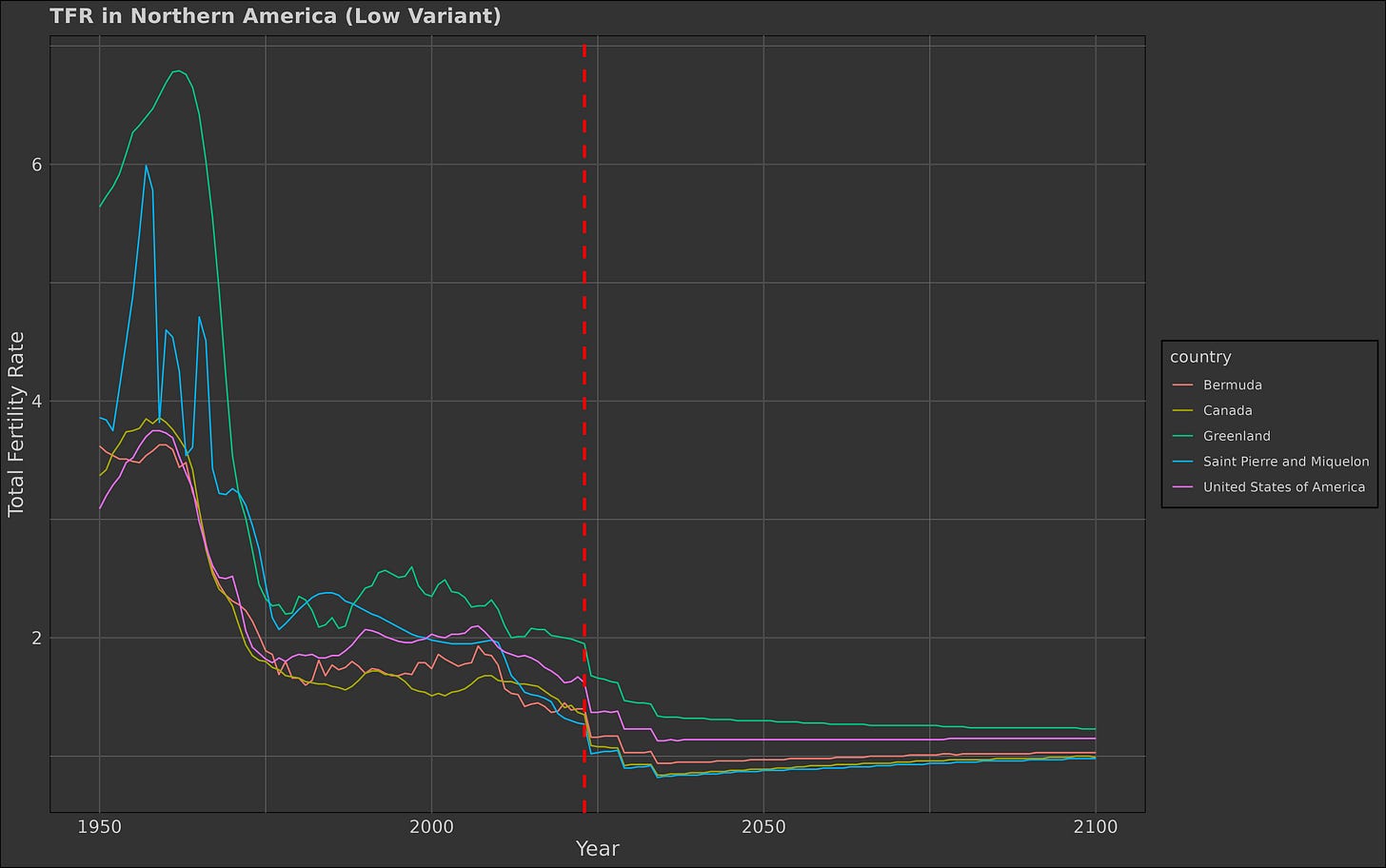

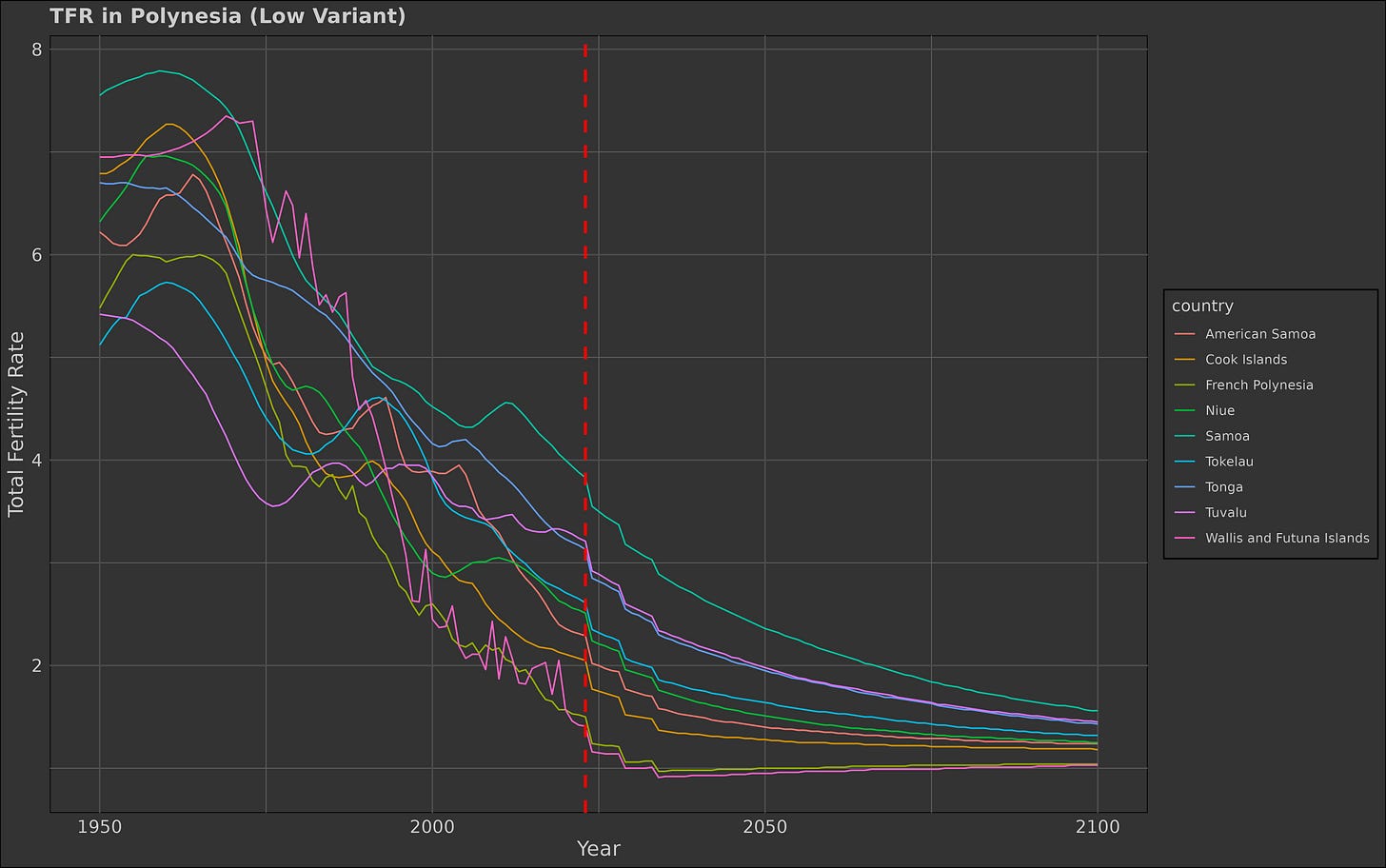

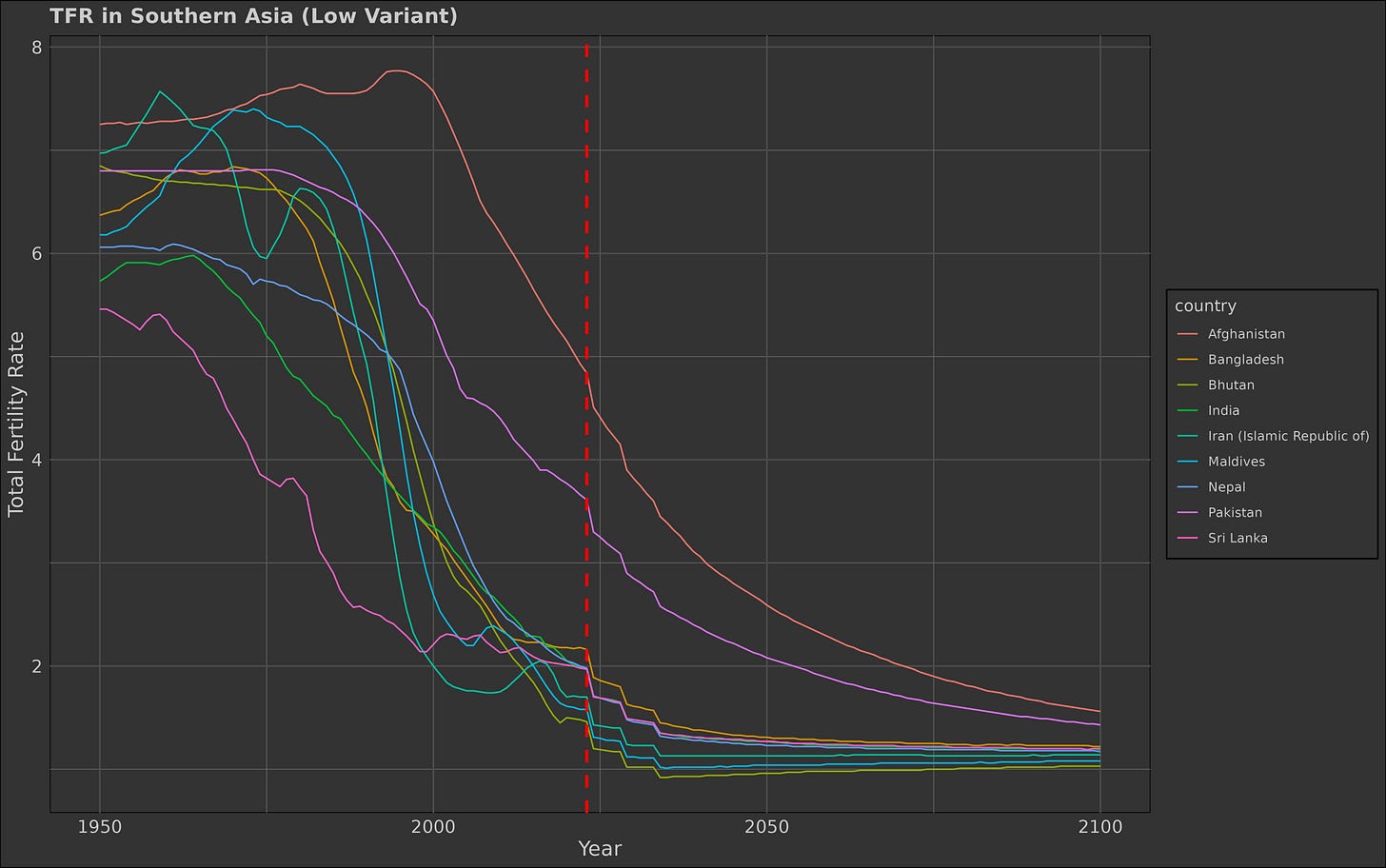
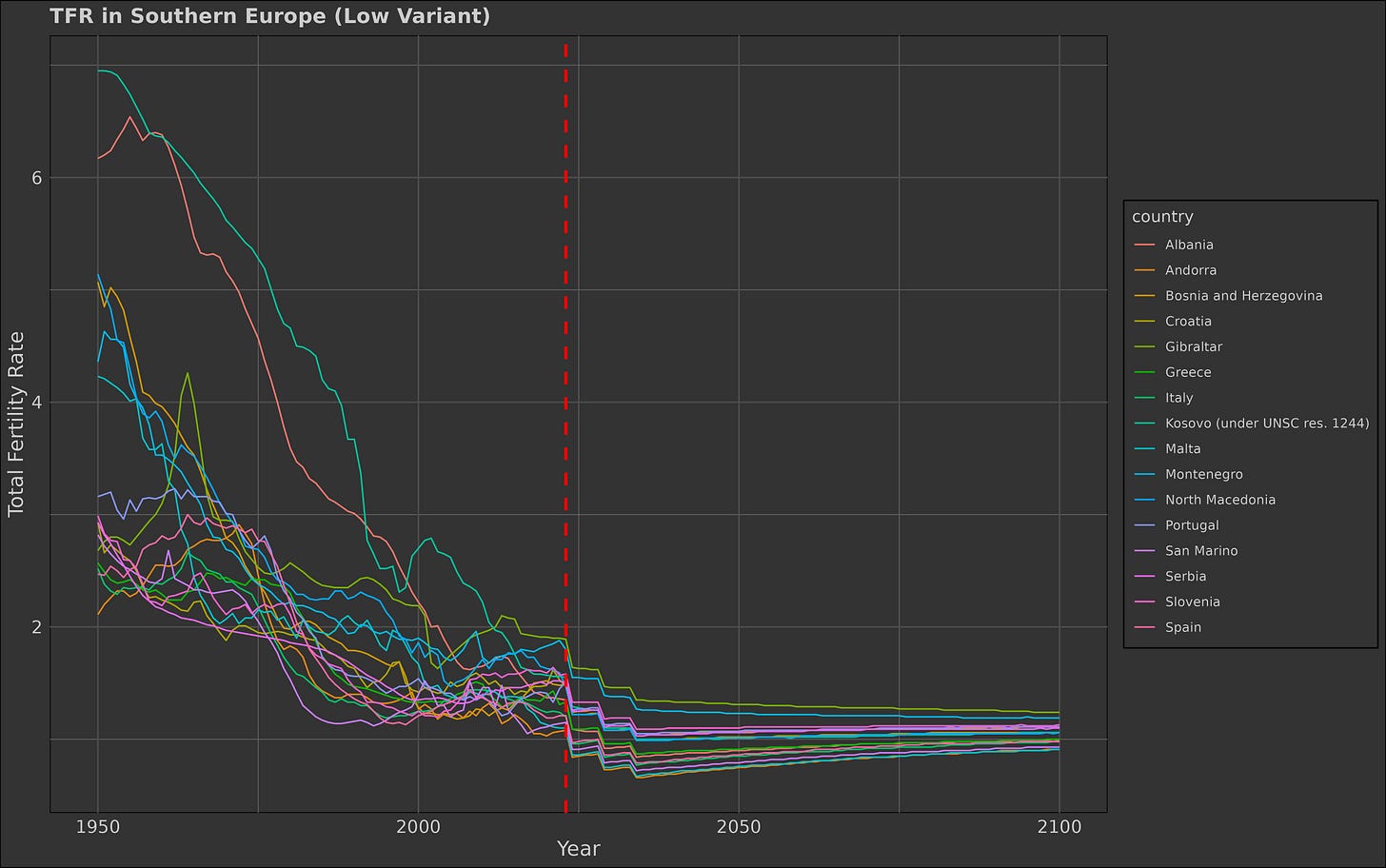
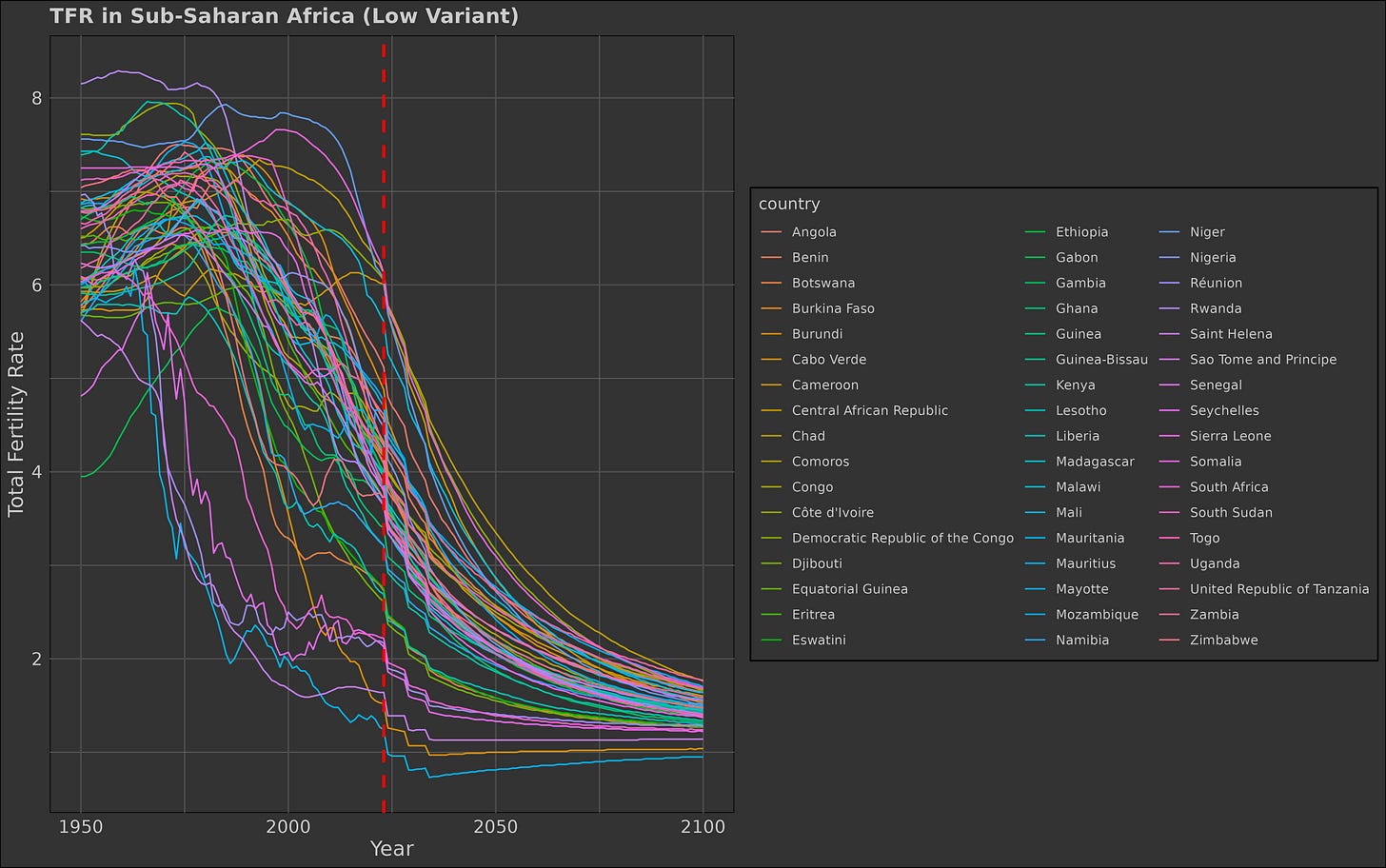
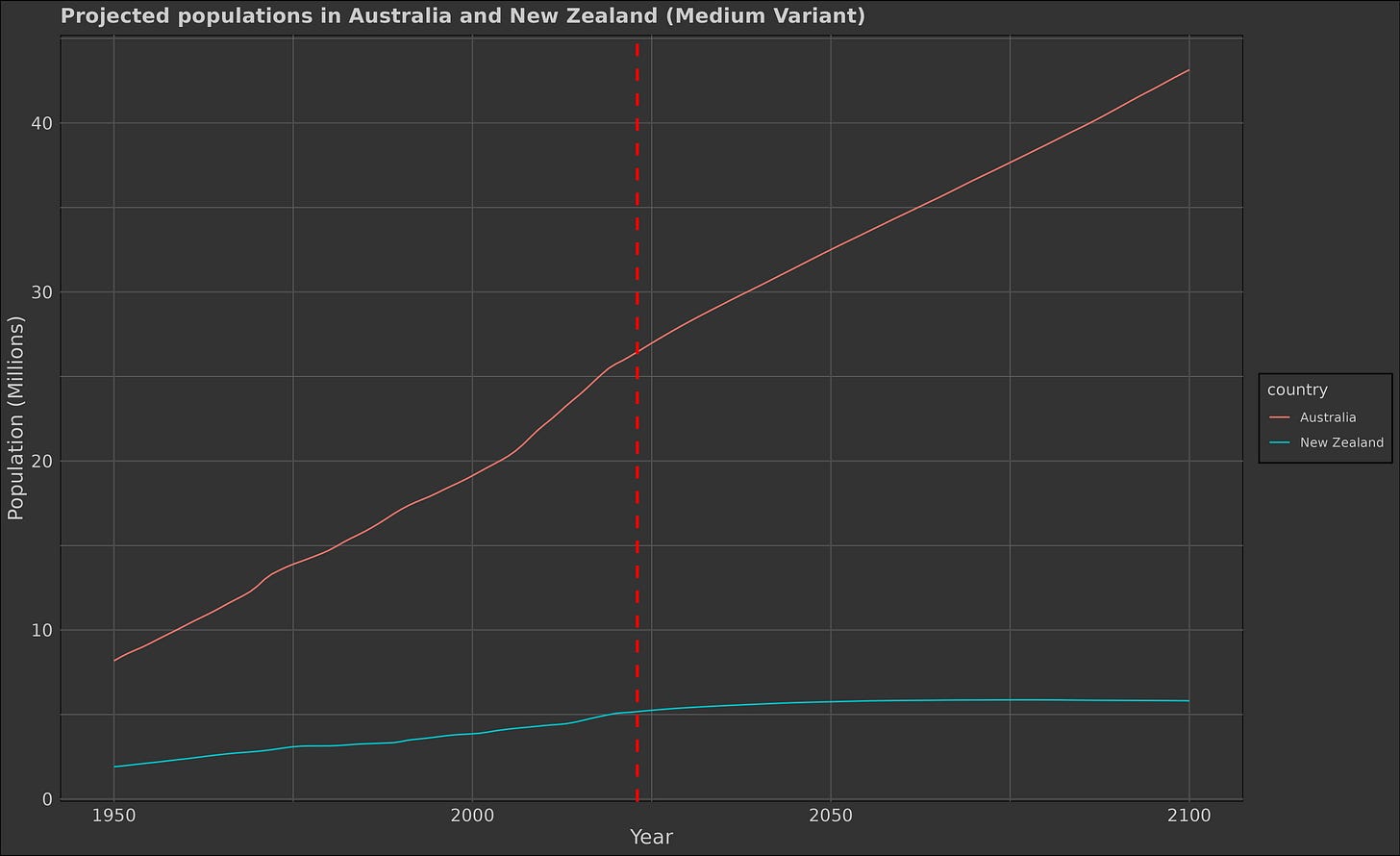

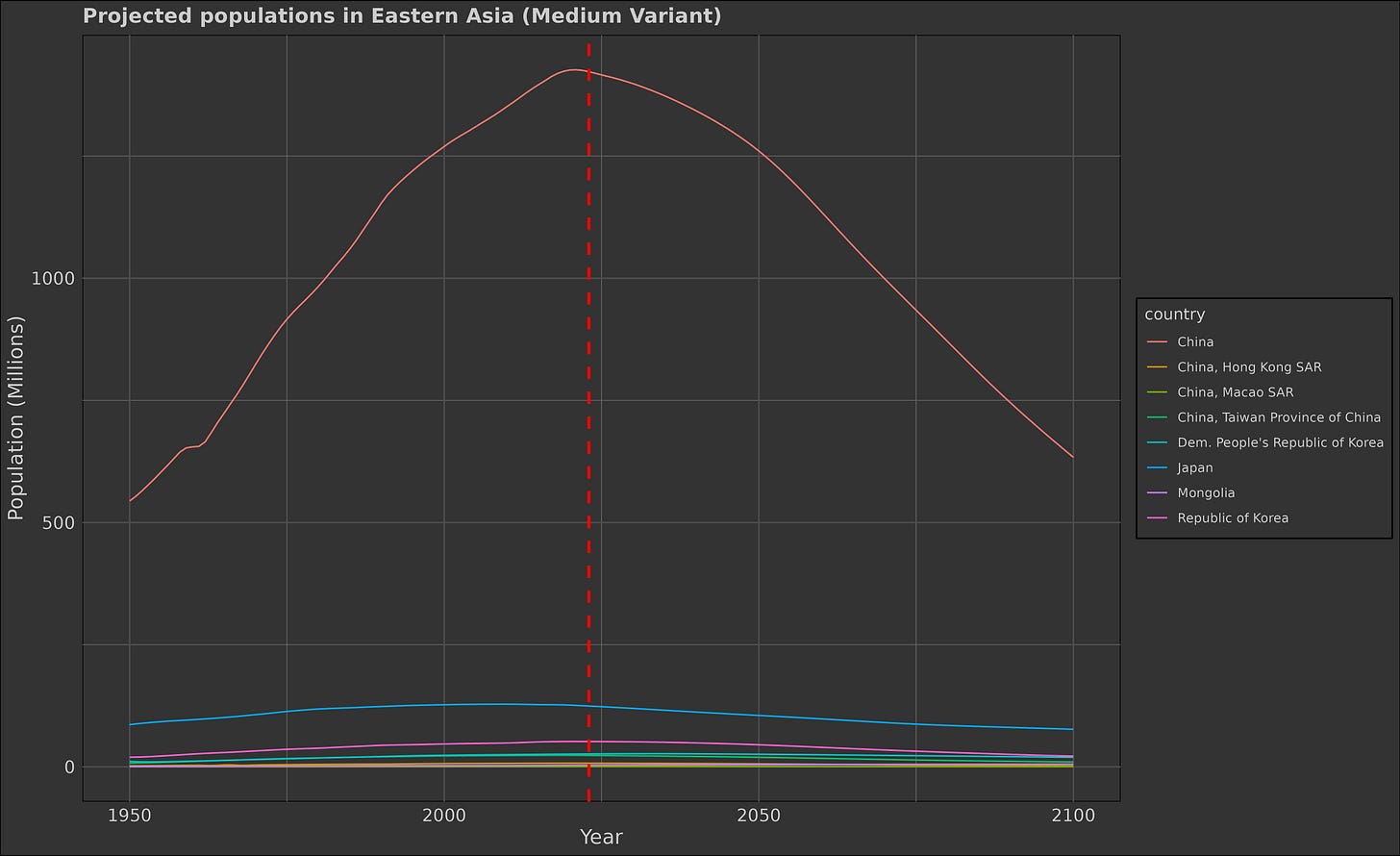

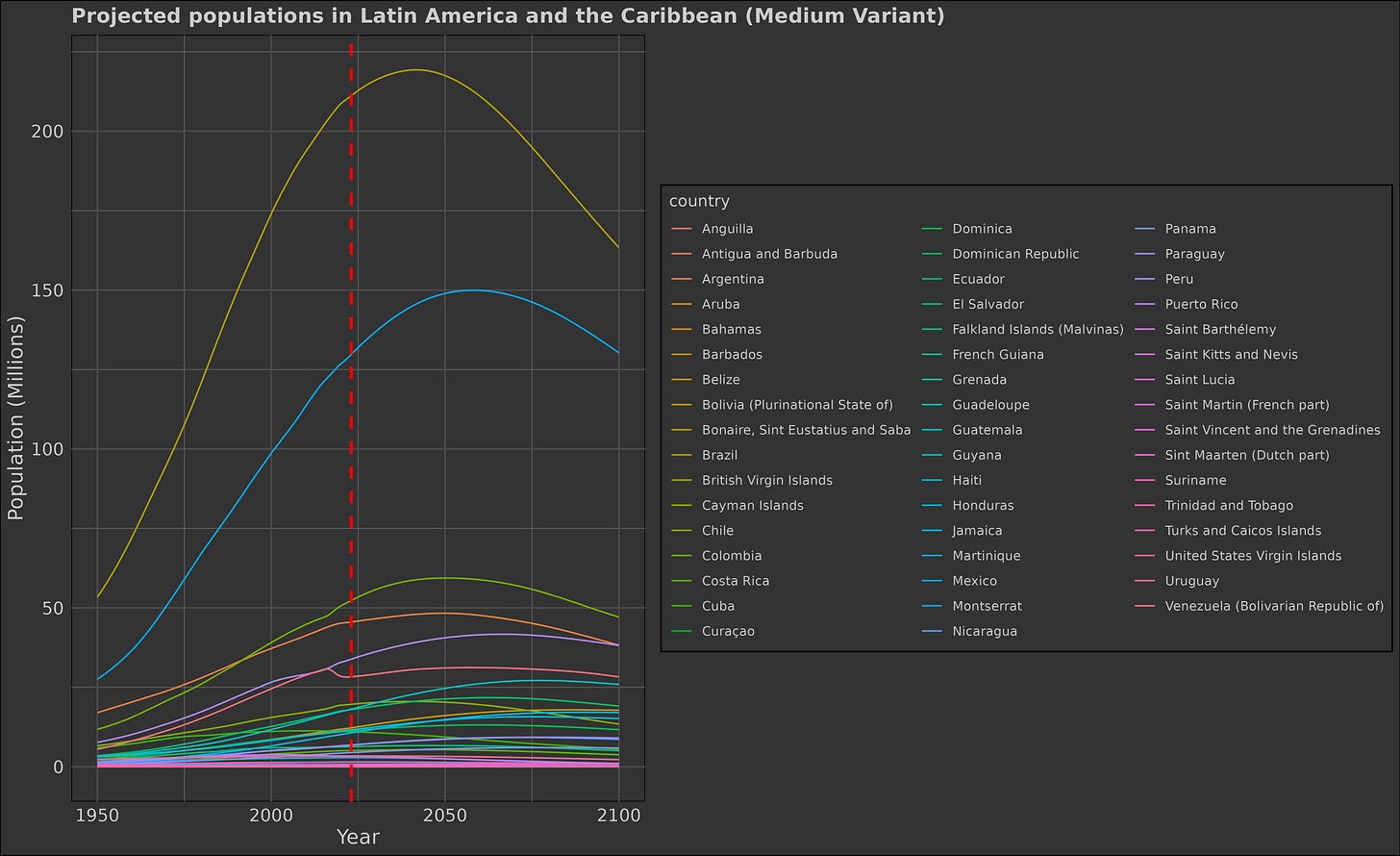
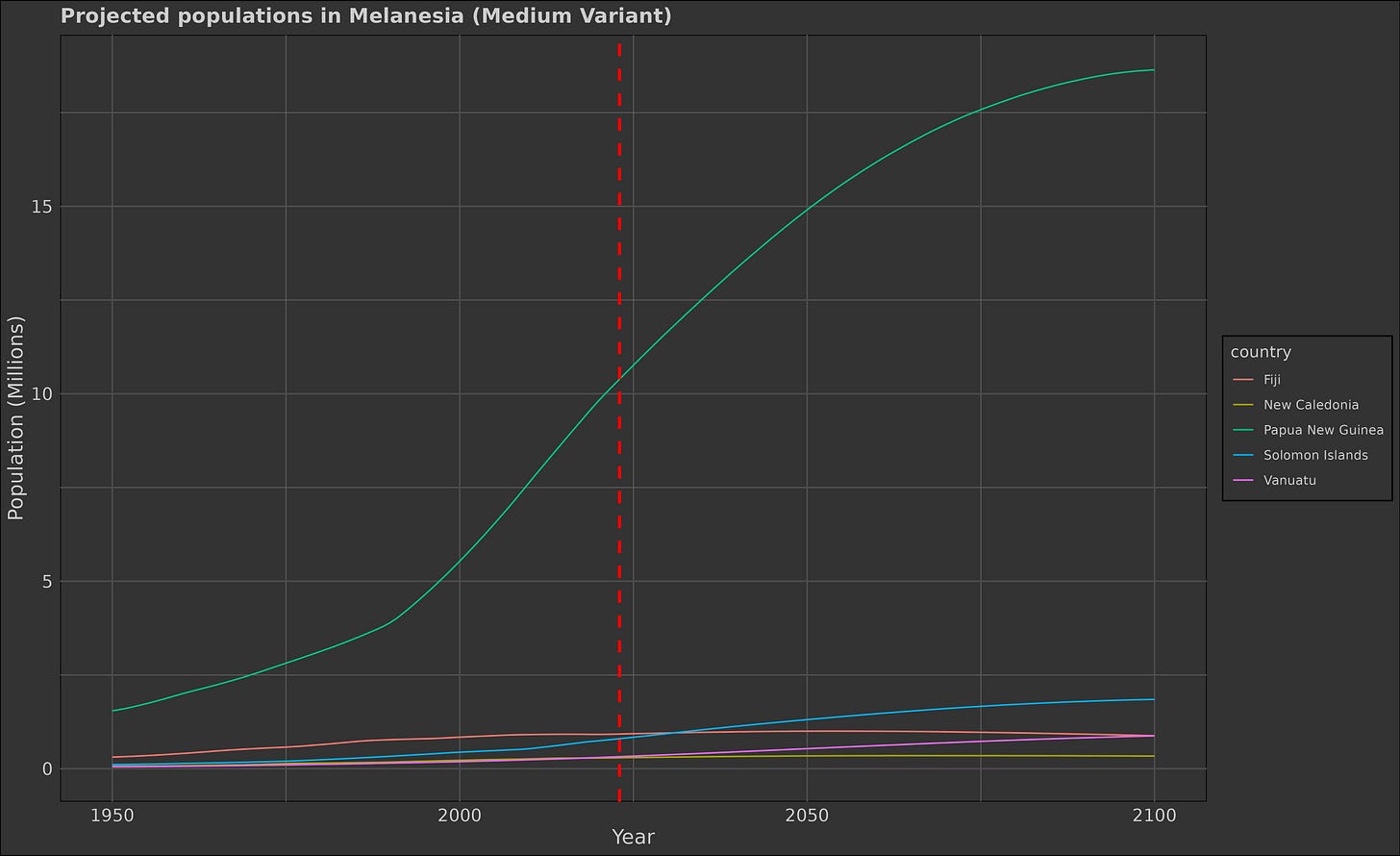

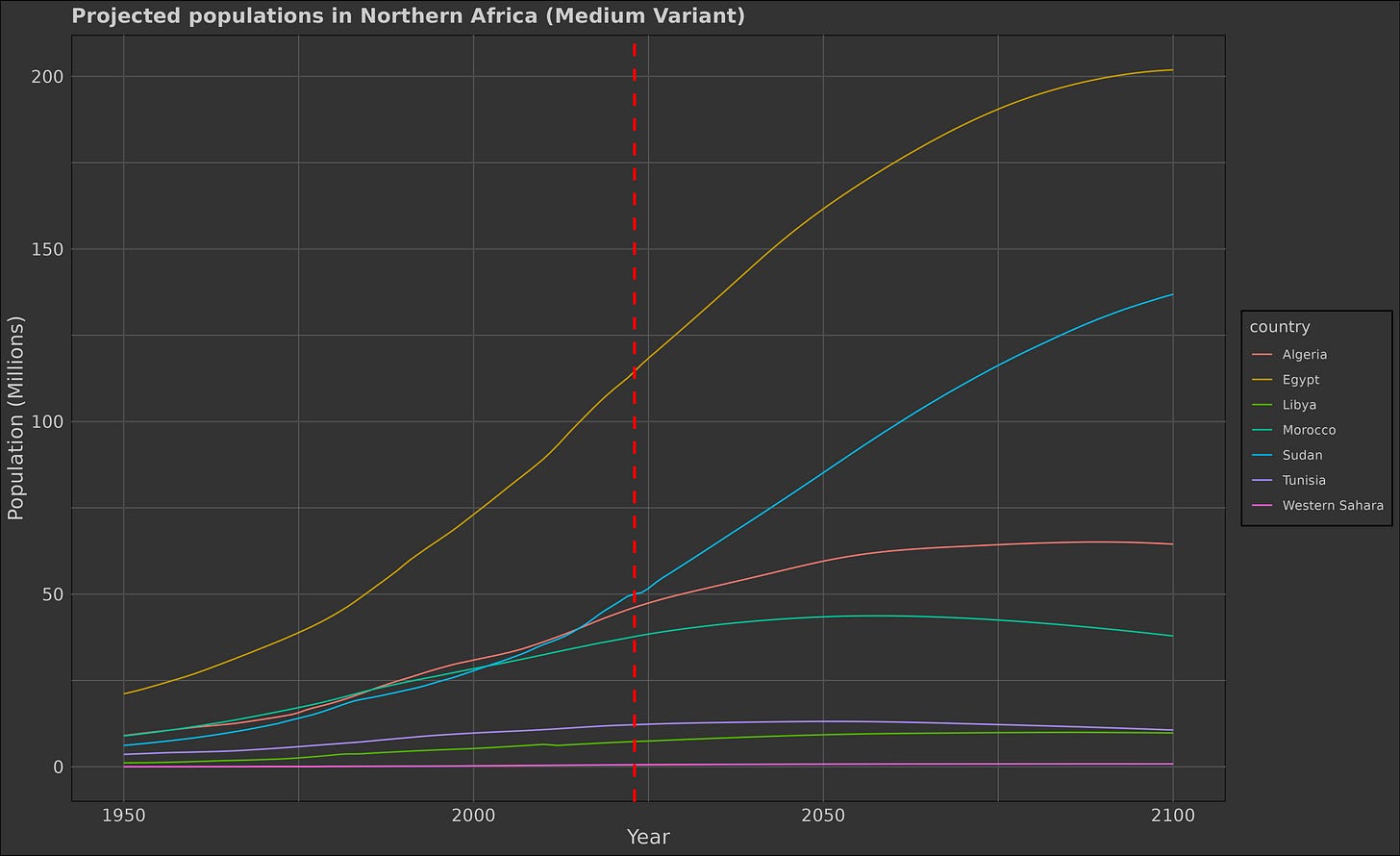

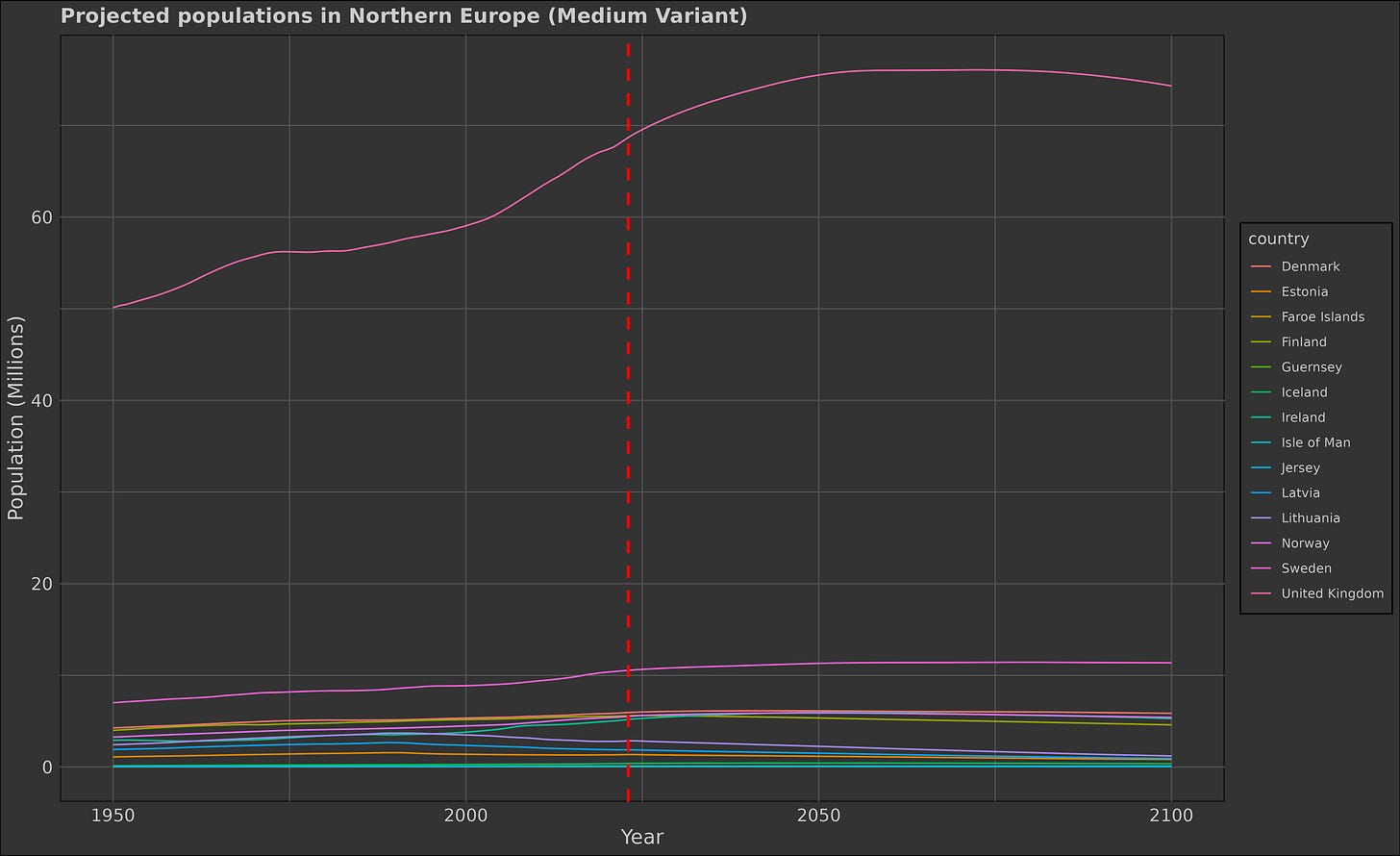

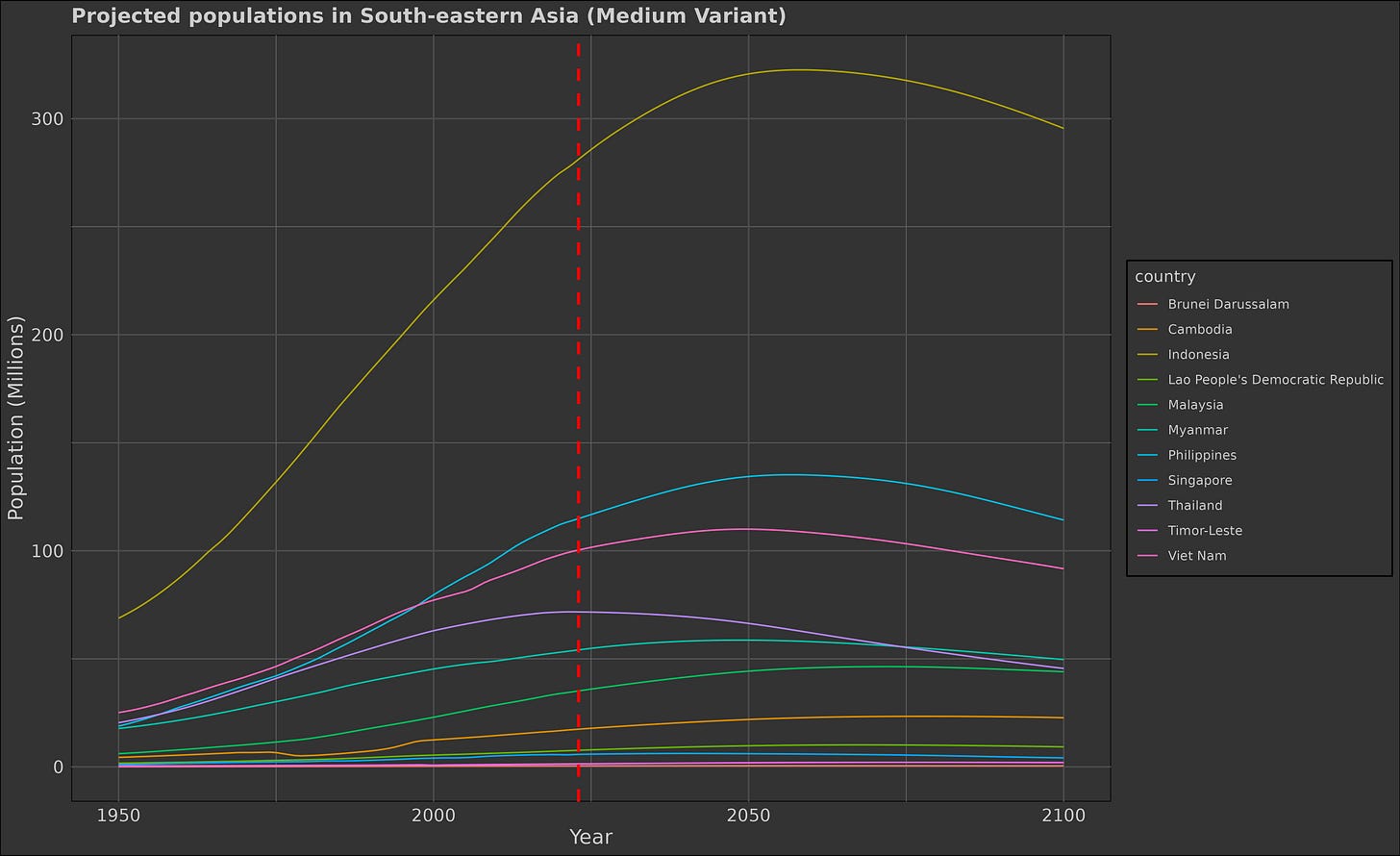



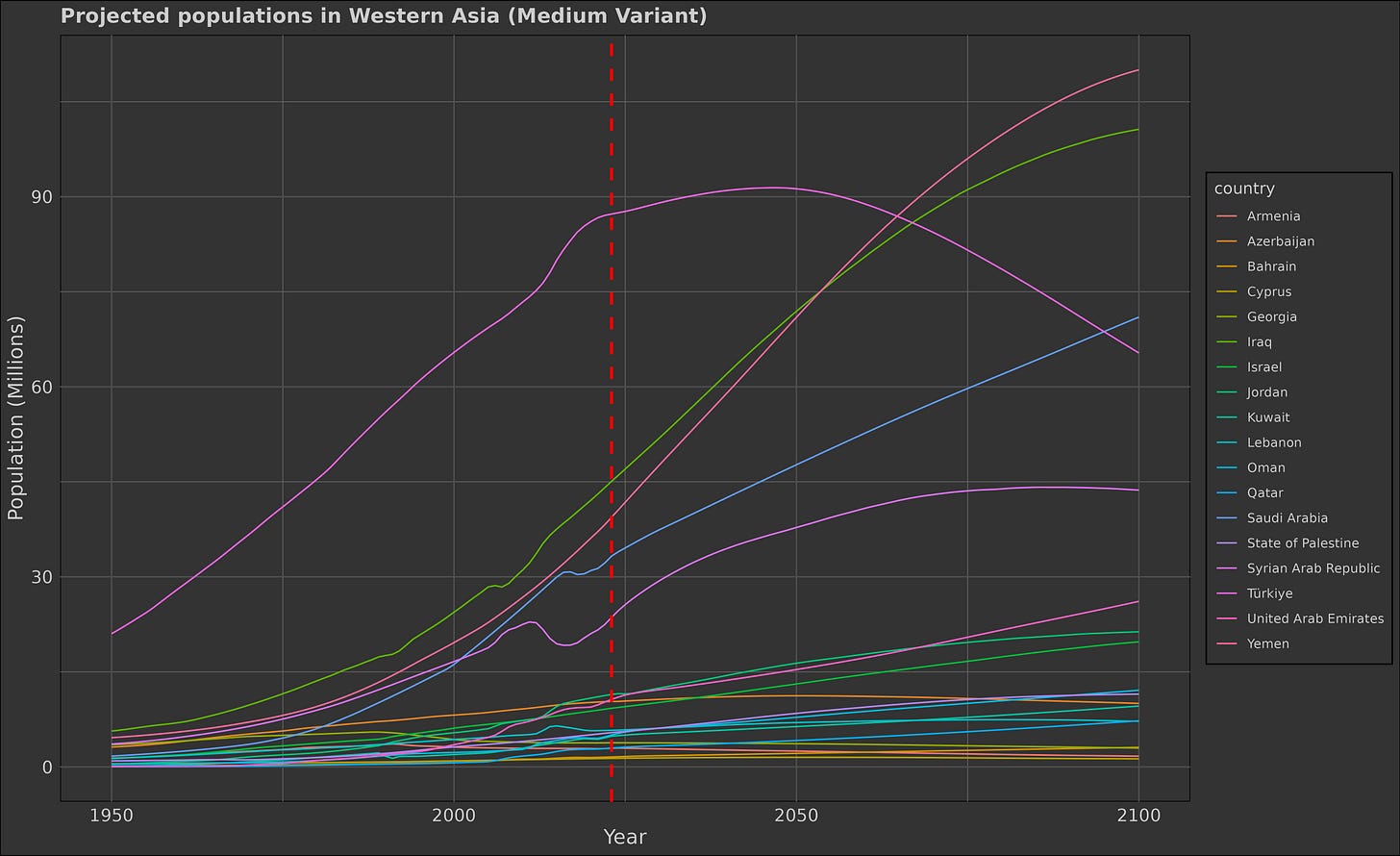
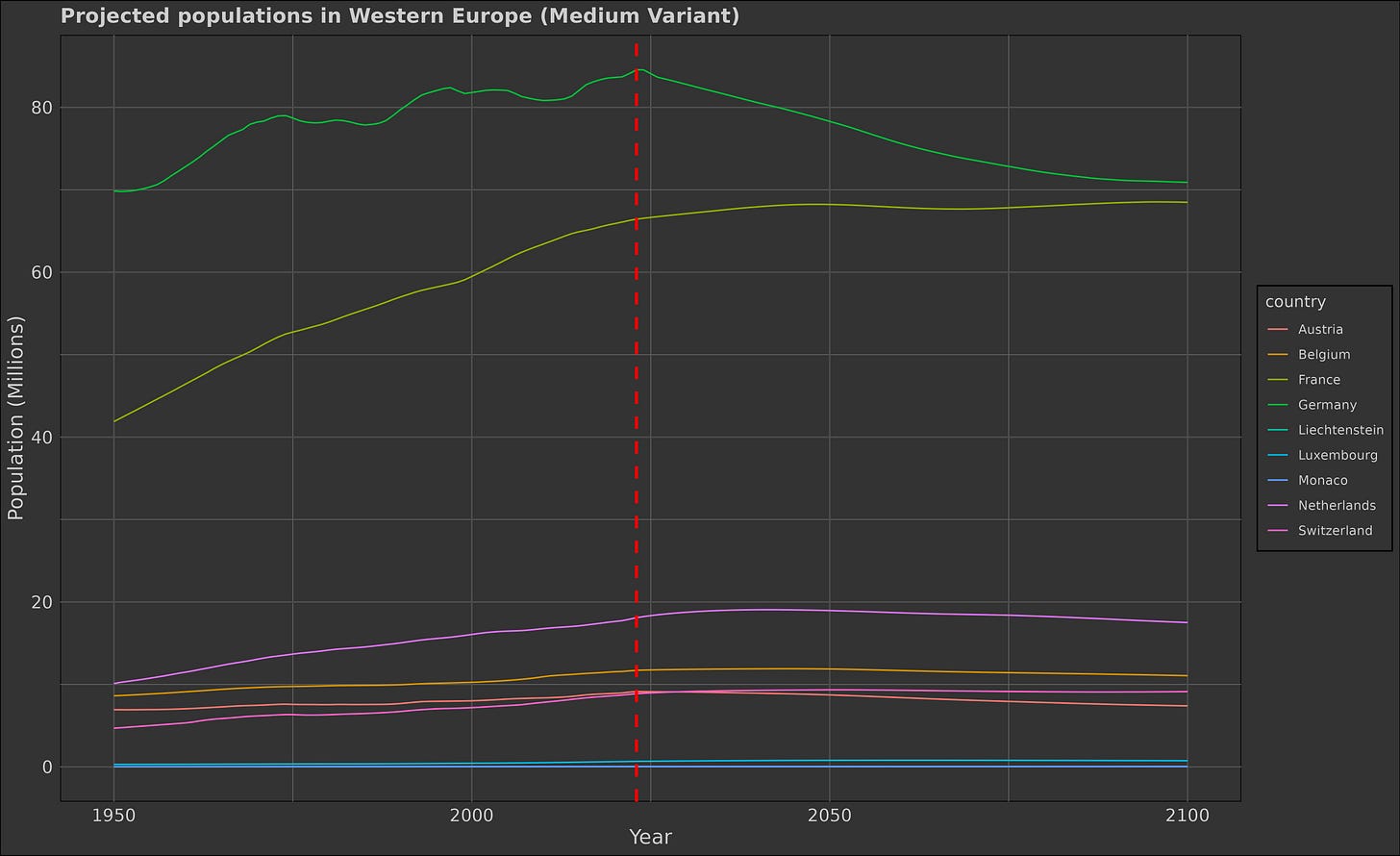



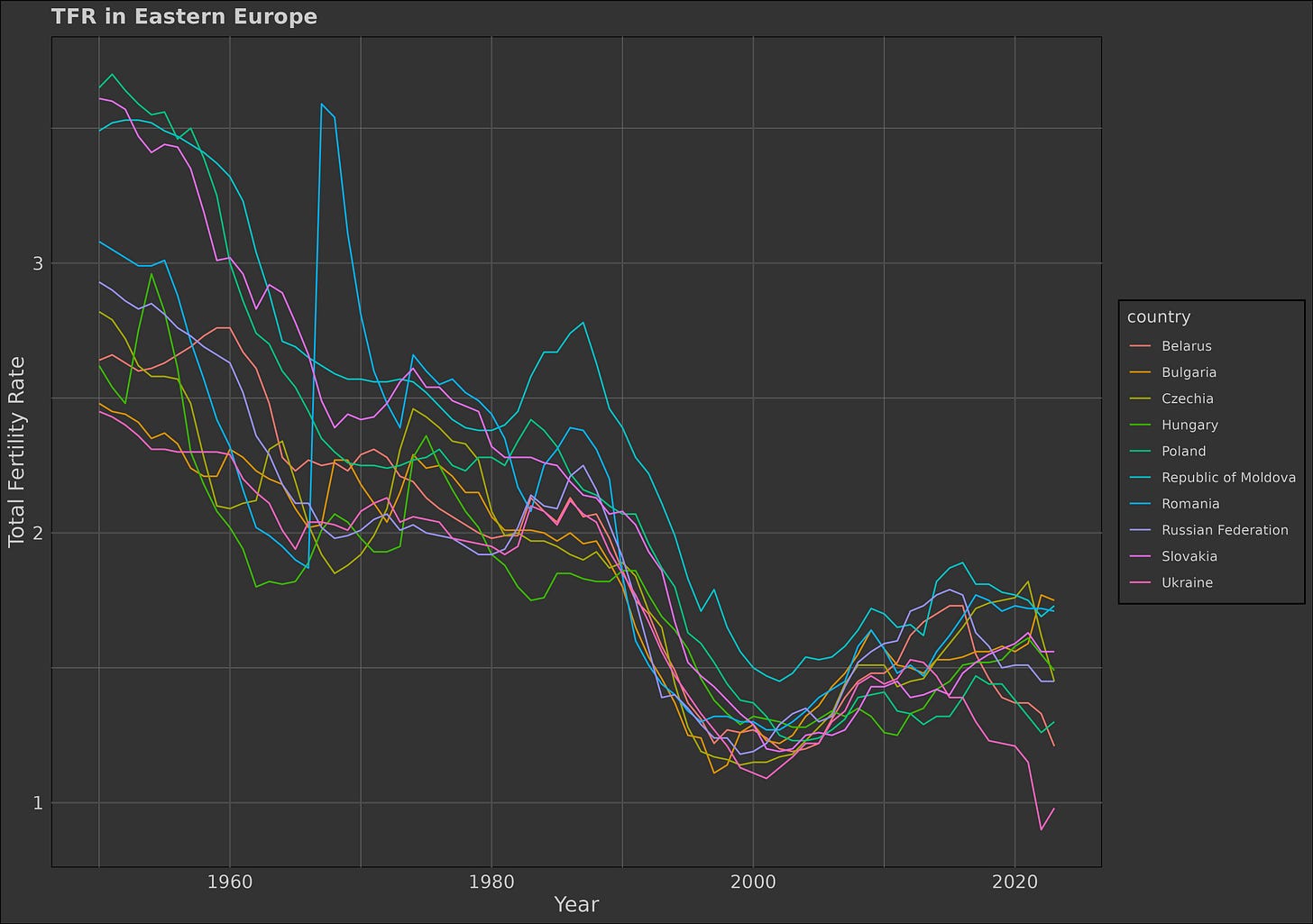


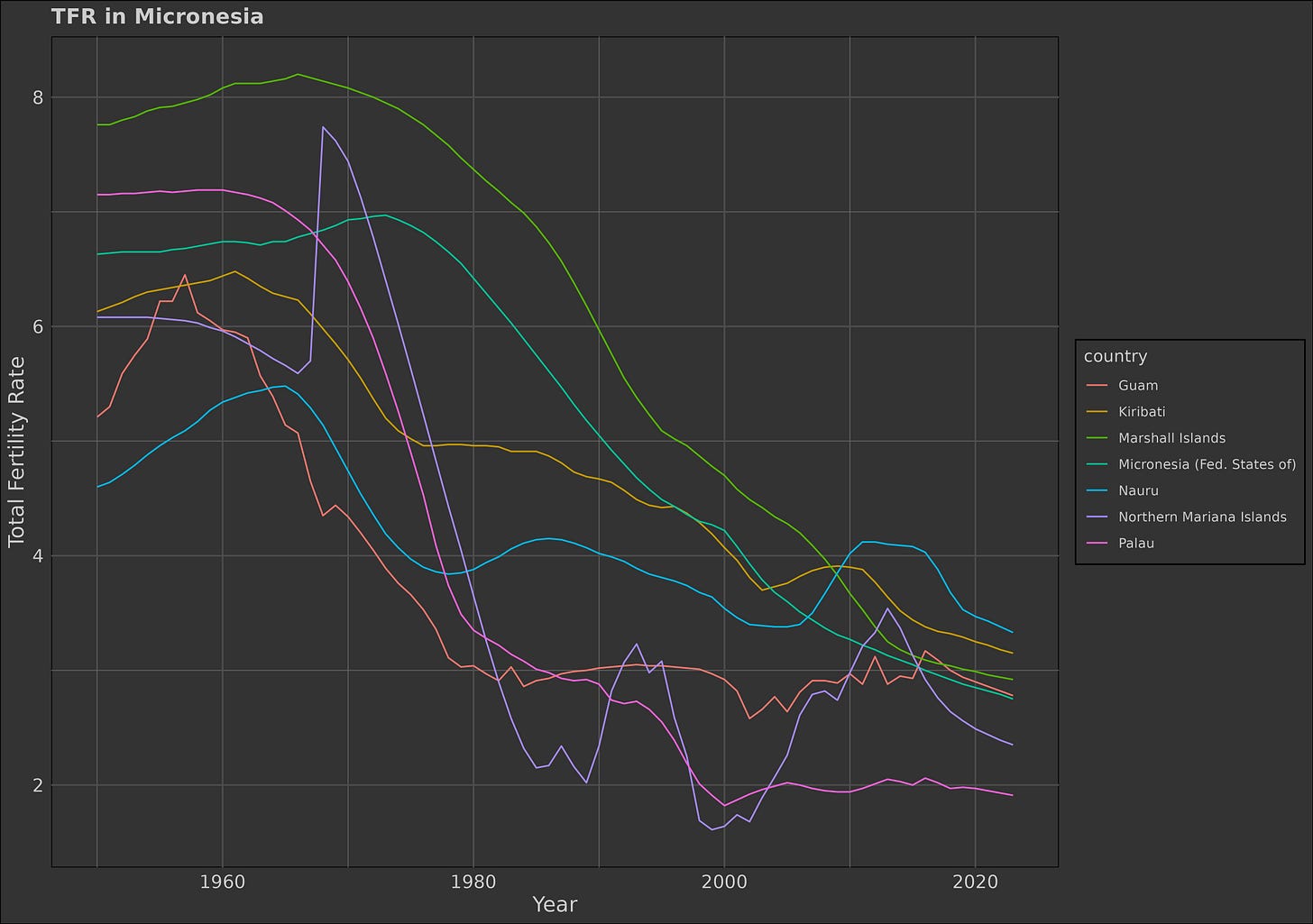

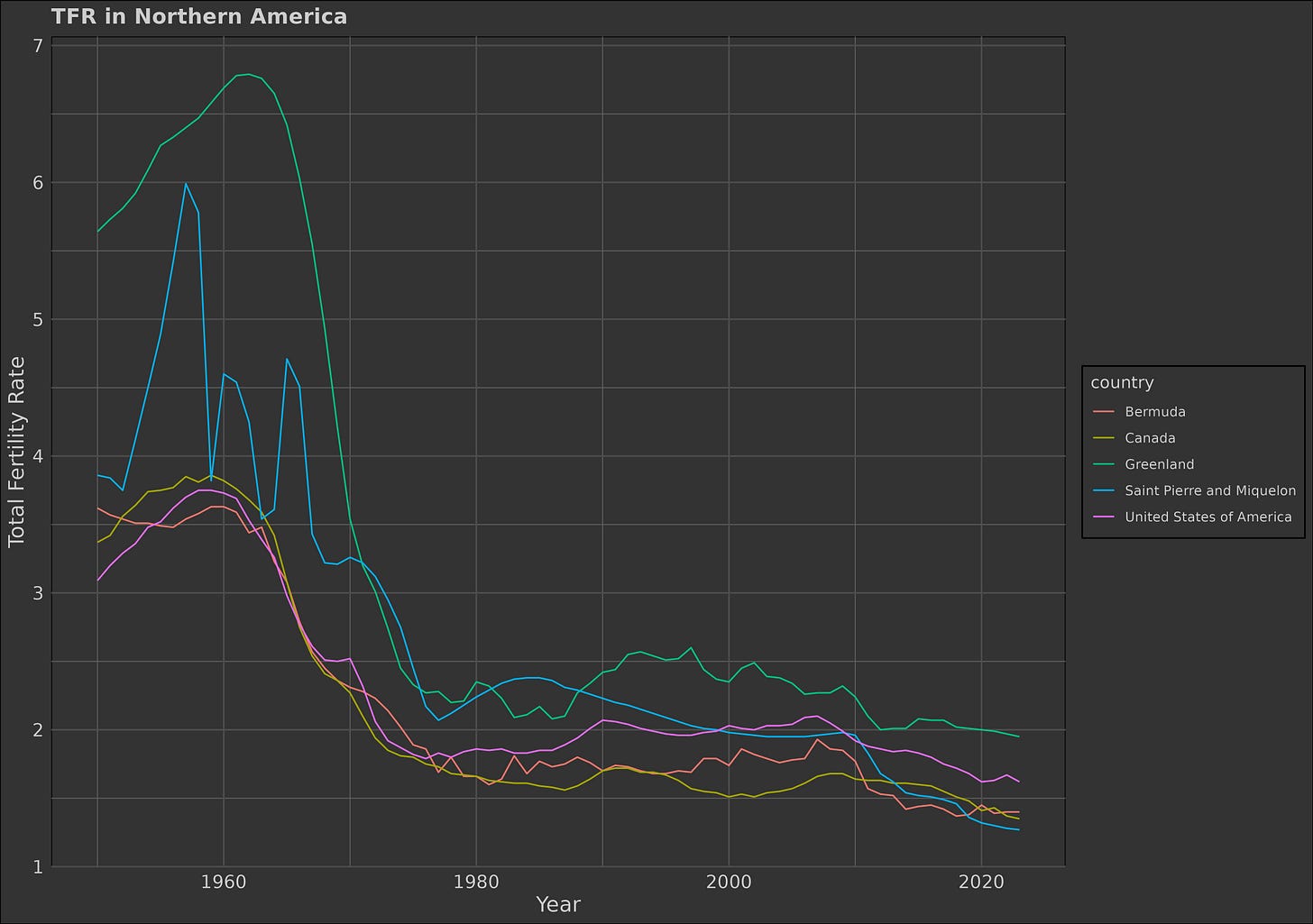
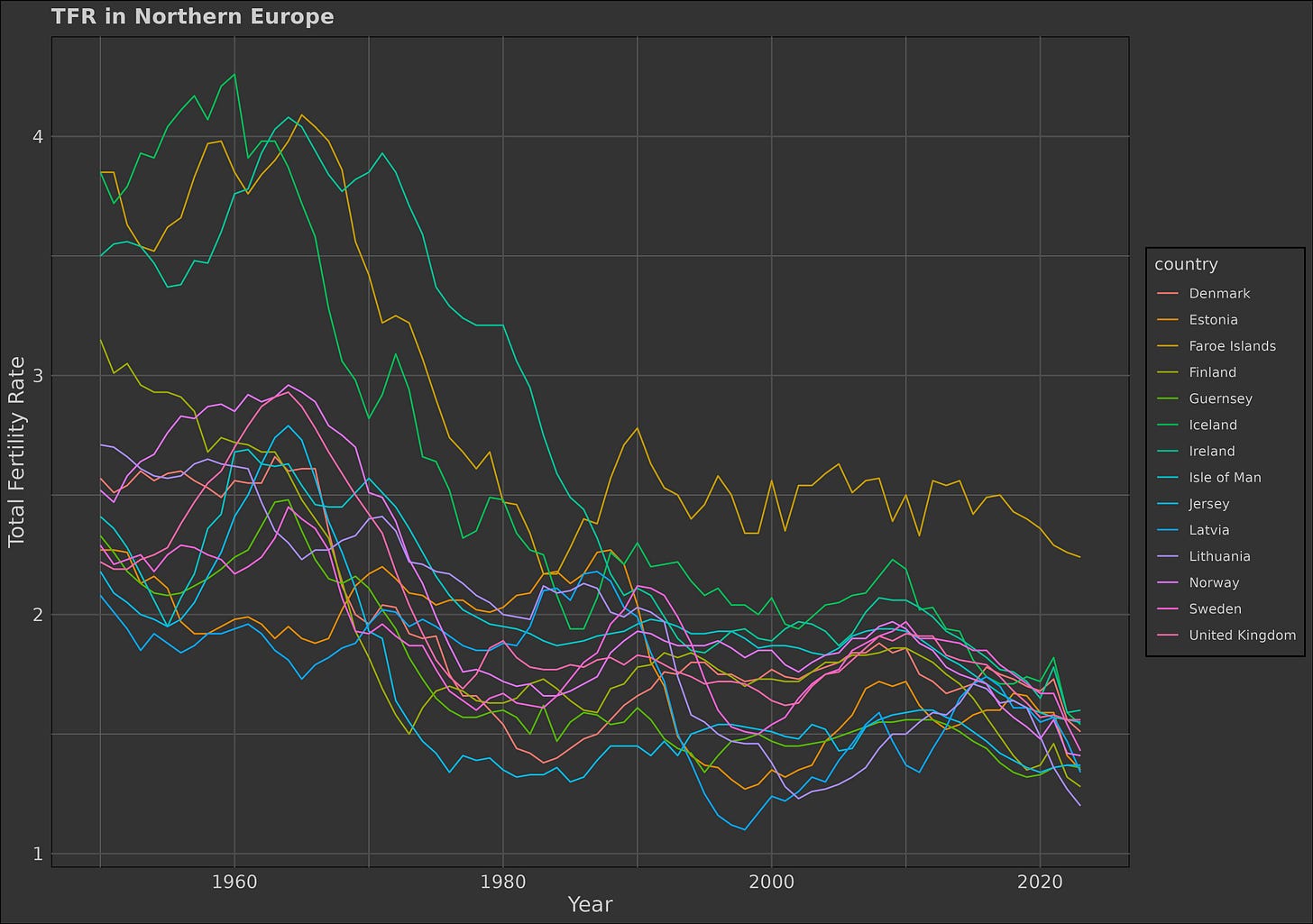

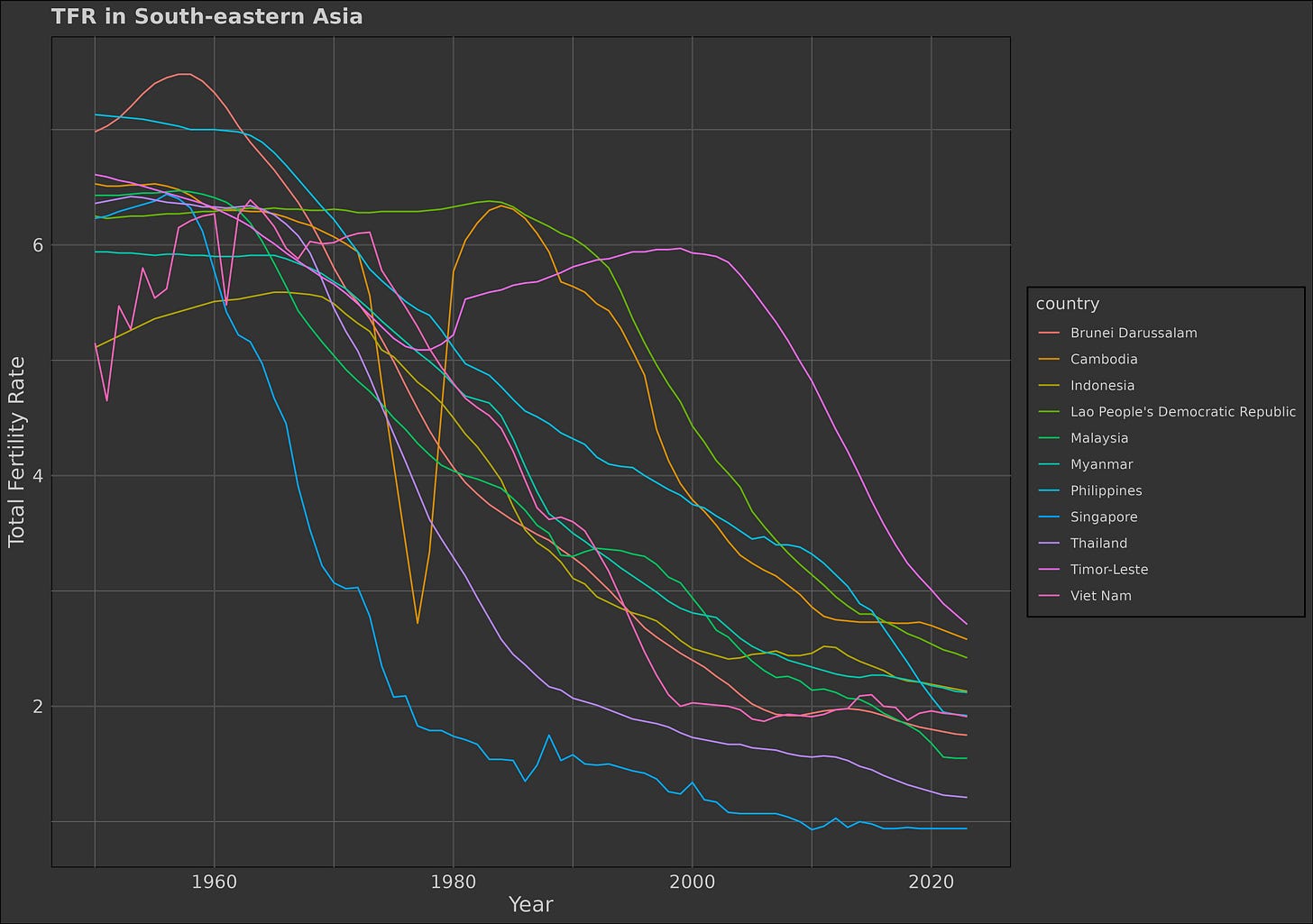



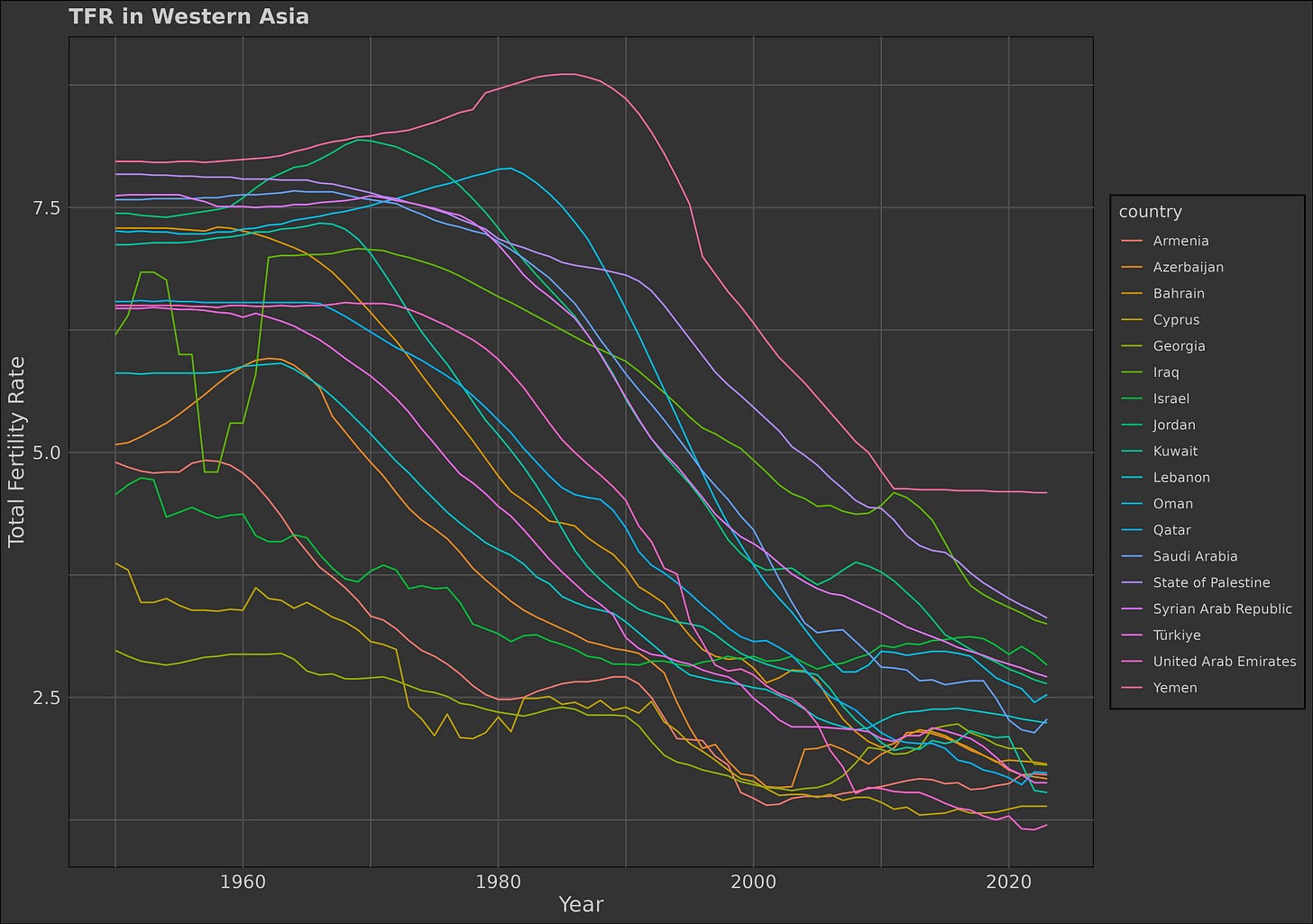
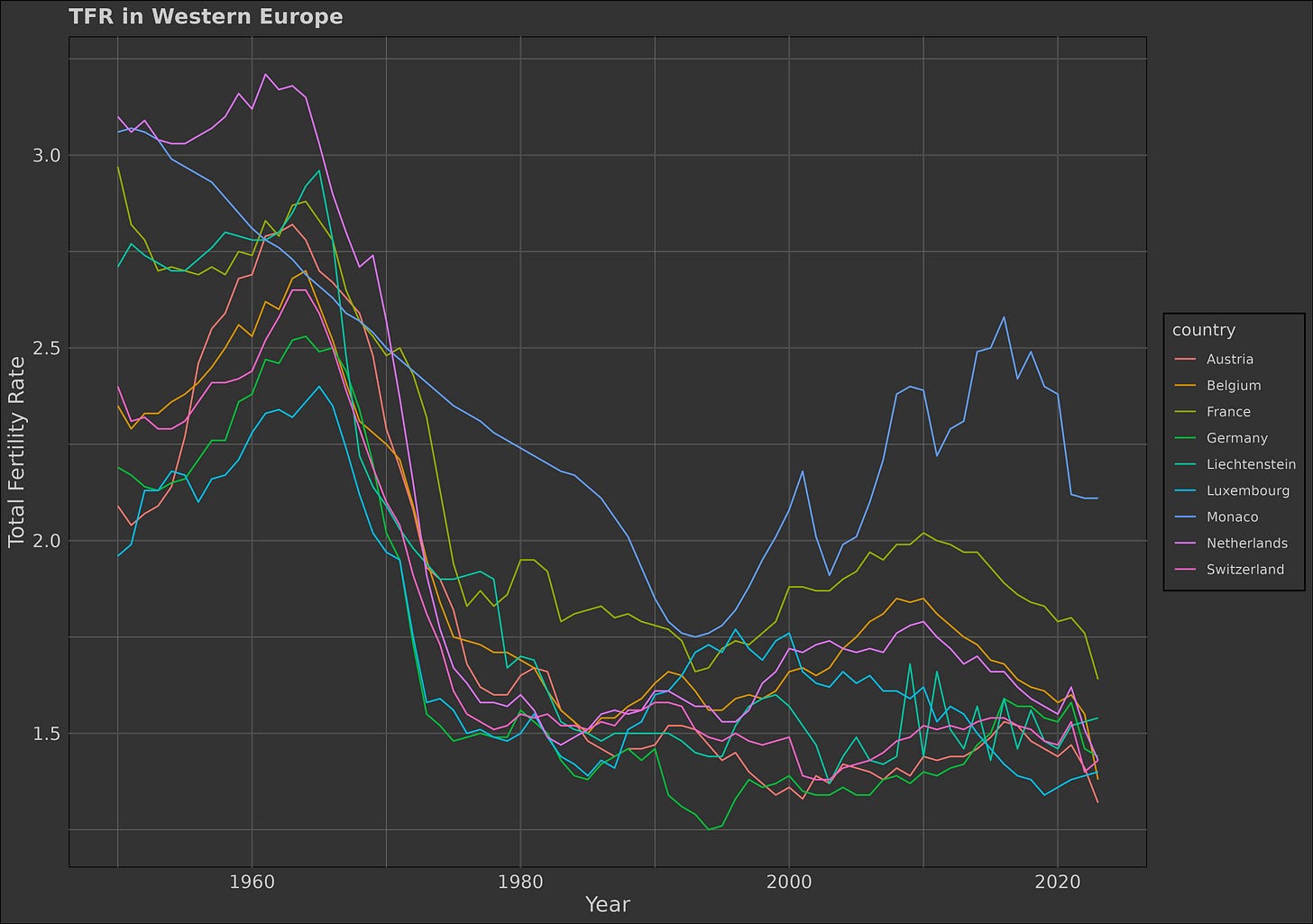
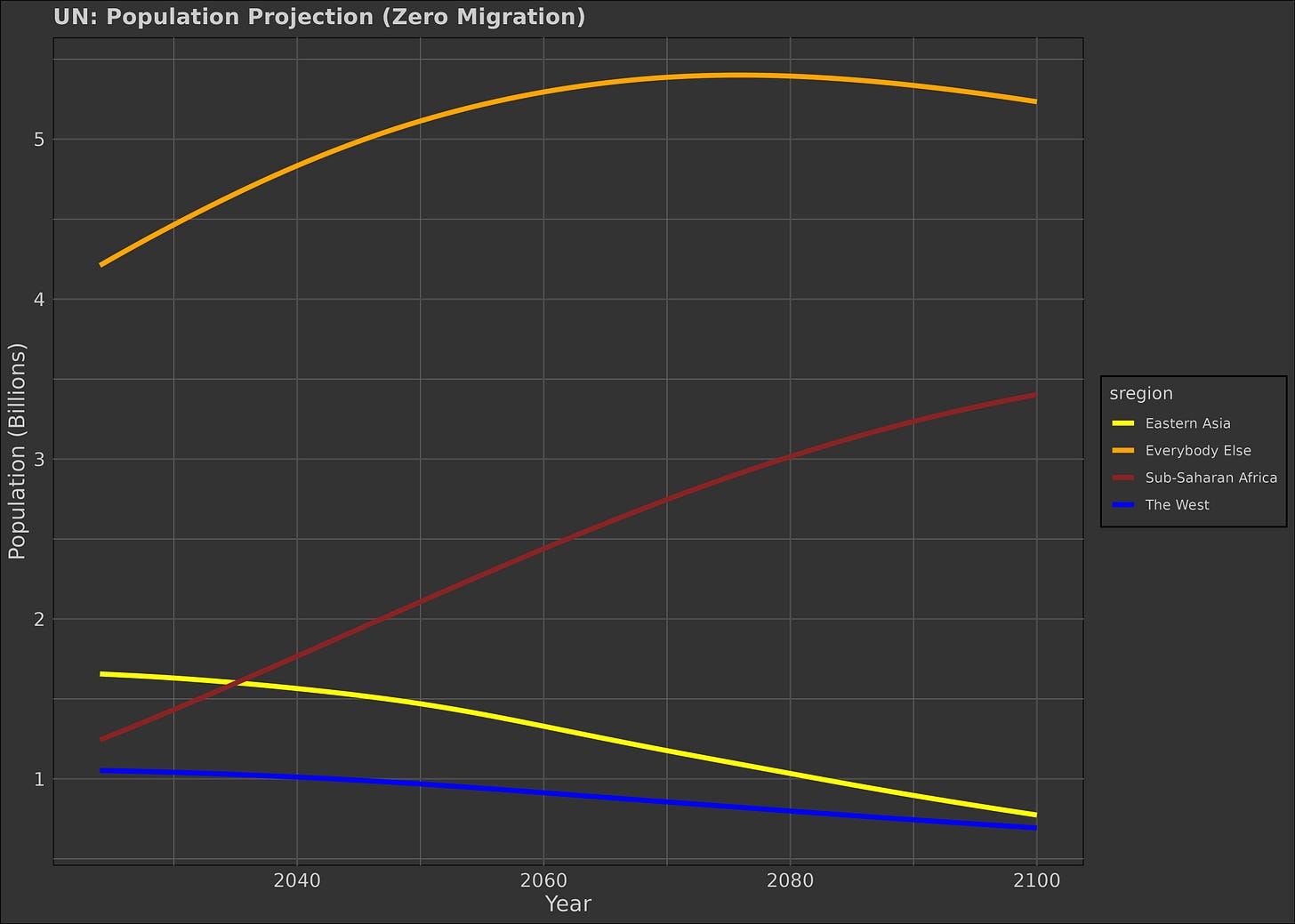
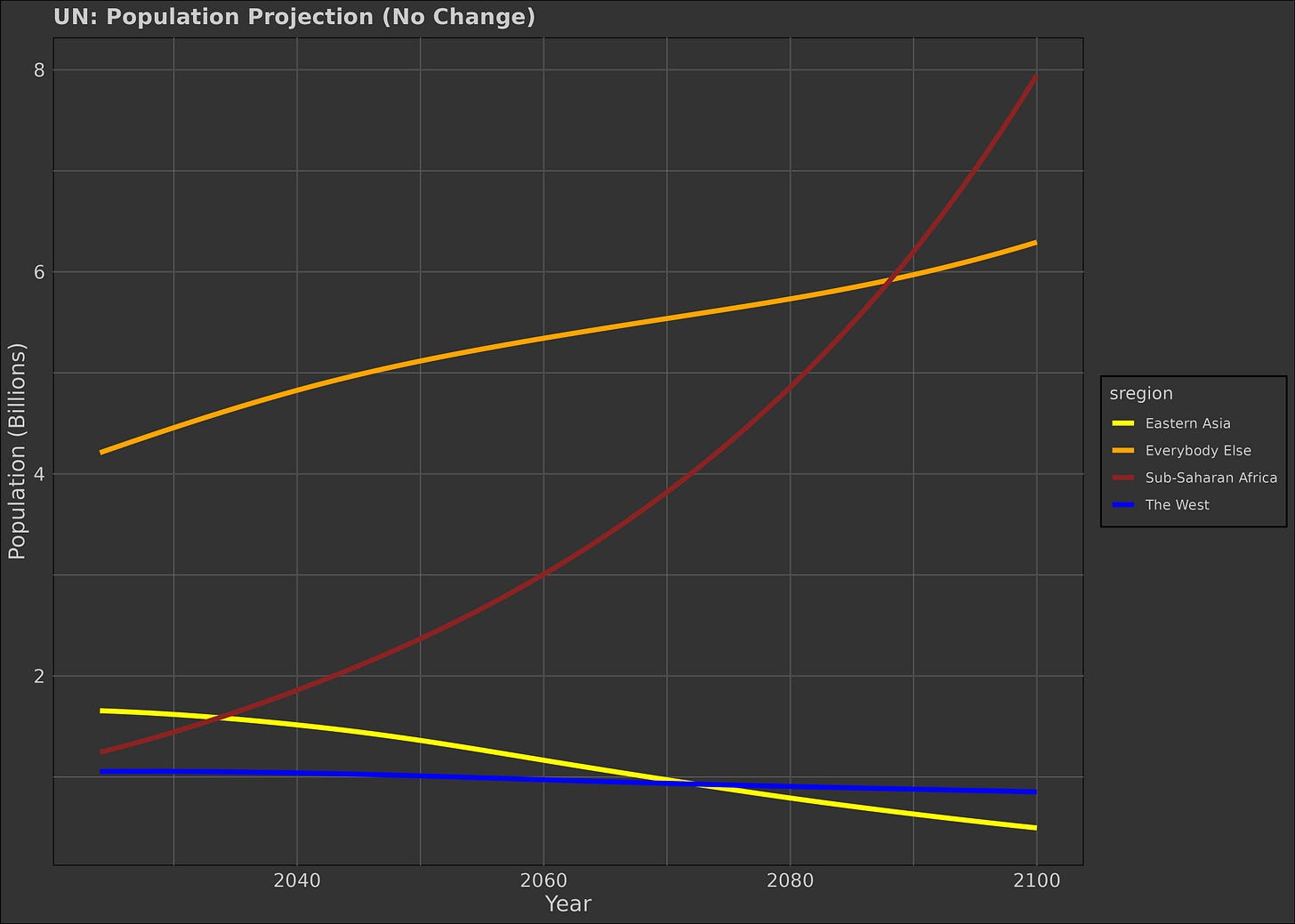
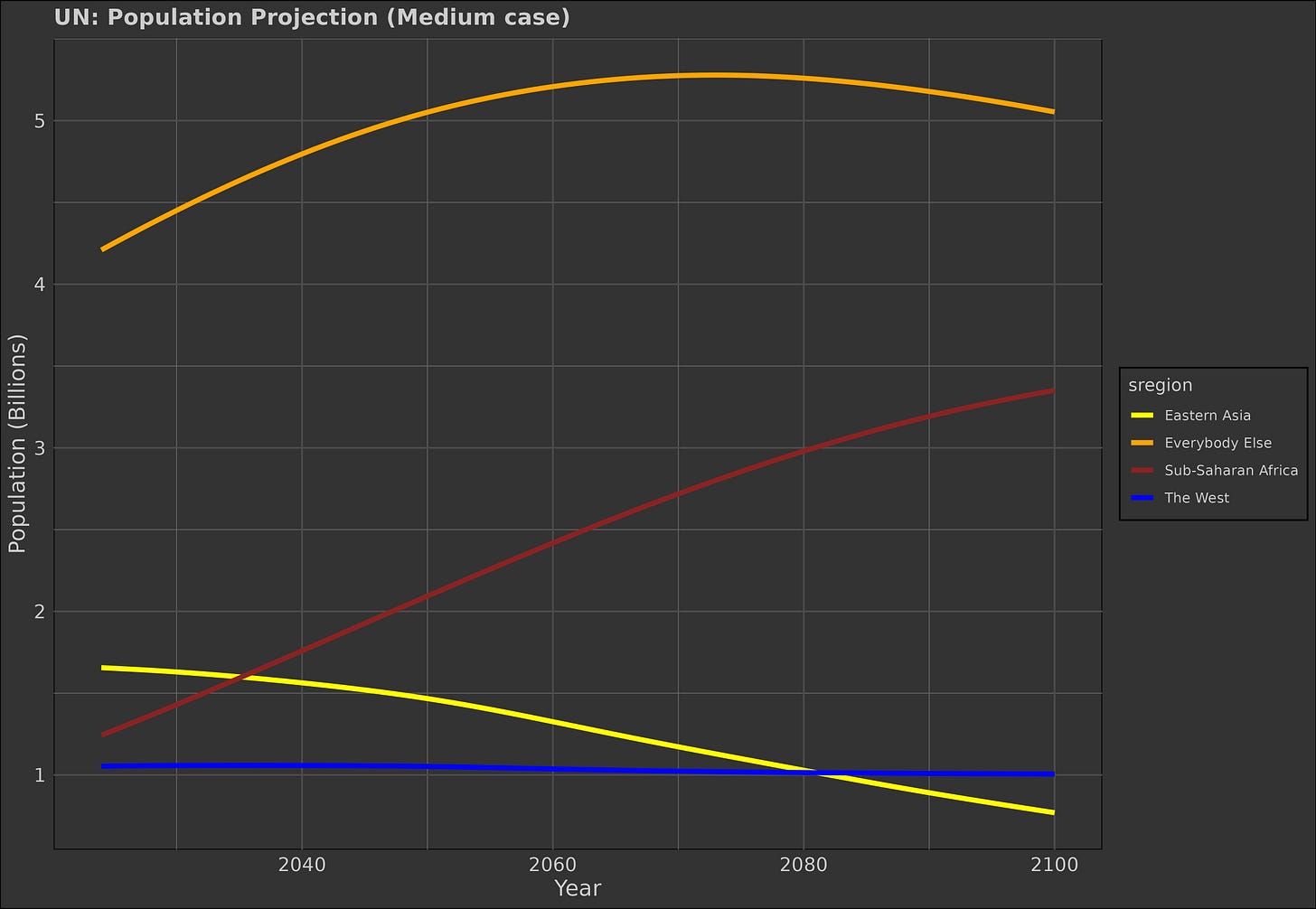
What program do you use to produce those graphs?